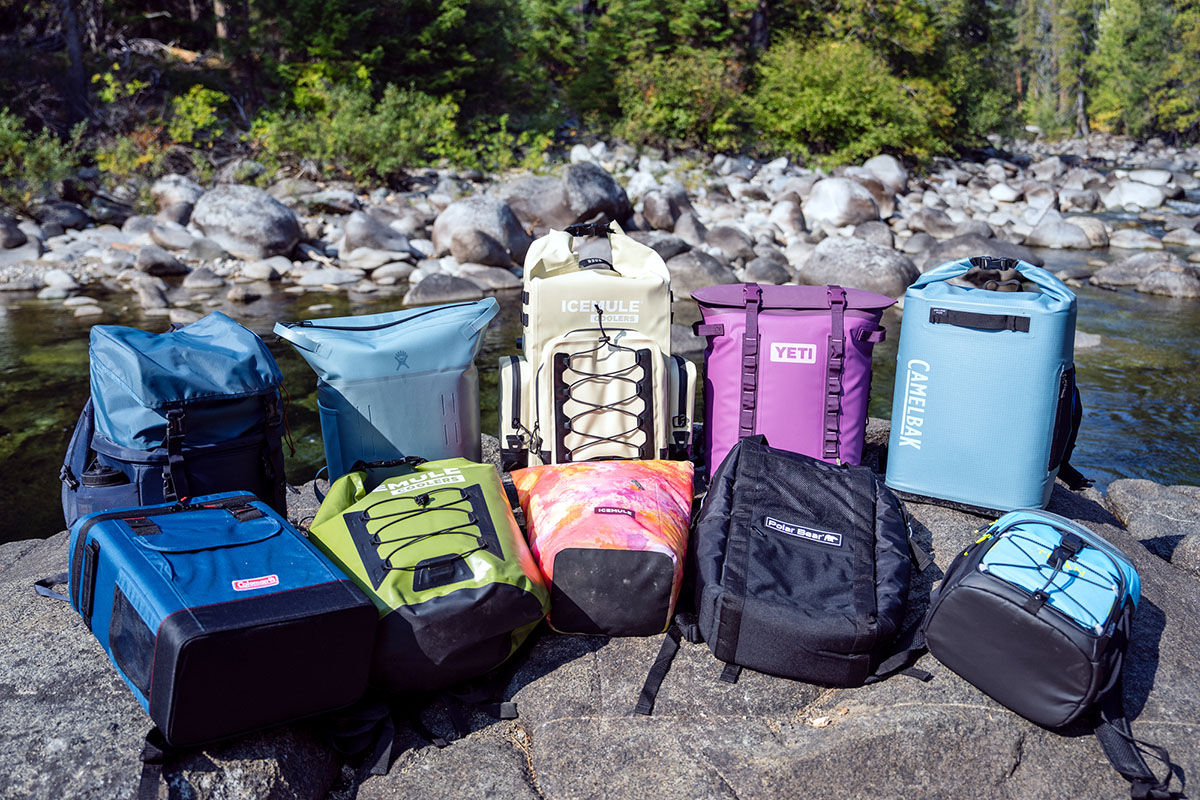
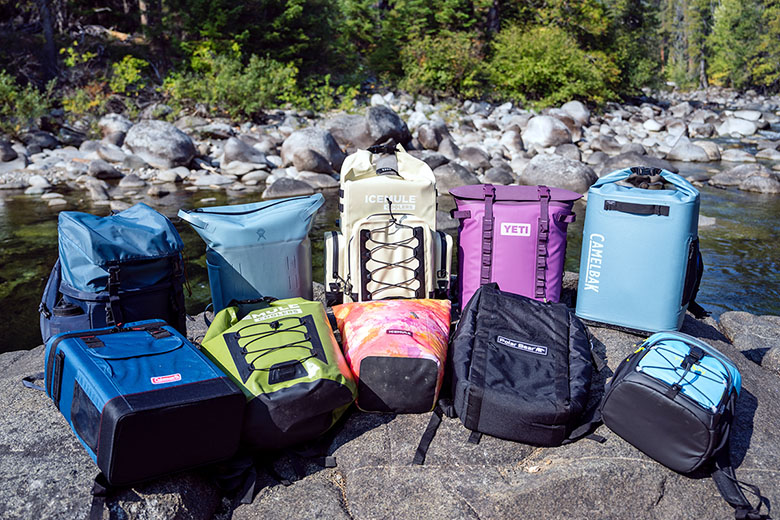
Switchback Travel (Jason Hummel)
Backpack coolers offer the ultimate in portability for covering longer distances, whether you’re headed to a campsite deep in the woods or hiking in for an afternoon paddle at your favorite lake. While a step down from traditional hard-sided coolers in ice retention and overall durability, they’re much lighter, more packable, and come with padded straps and suspension systems (similar to hiking daypacks) to maximize carrying comfort. From burly waterproof options to two-in-one designs that offer both gear and cooler storage, below we break down the top backpack coolers of 2024. For more background information, check out our detailed comparison table and buying advice below the picks.
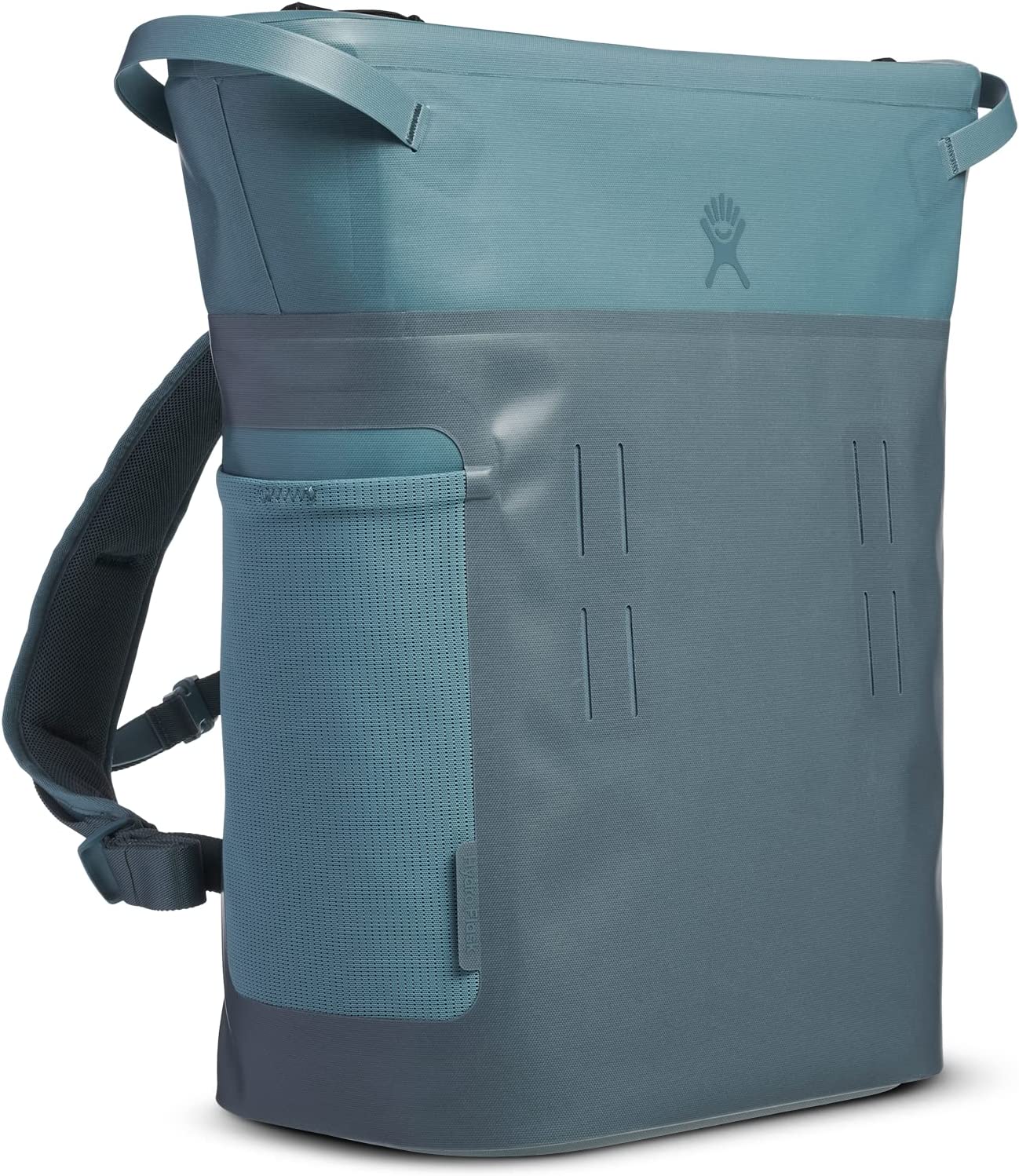 Capacity: 36 cans (without ice)
Capacity: 36 cans (without ice)
Weight: 2 lb. 10.1 oz.
Ice retention: 36 hours
What we like: Great all-around performance in a streamlined and good-looking package.
What we don’t: Small opening and no hipbelt or zippered storage.
Backpack-style coolers are a fun bunch: They’re easy to carry, far lighter than traditional hard-sided models, and borrow heavily from hiking daypacks with padded suspension systems and exterior storage for stashing small extras. Hydro Flask’s 20 L Day Escape checks all those boxes emphatically and was quick to win us over during testing: It’s well built with nicely cushioned shoulder straps and a thick waterproof exterior that stands up well to rough use, the handles at the rear and sides make it easy to take on and off, and the exterior lash points are very useful for strapping to a kayak or boat. The closure system is another highlight, including a smooth-operating zipper that requires minimal force to open (not always the case with watertight designs), provides a reliable seal, and is easy to realign if it separates. All told, it’s a sleek but well-rounded design and nicely sized for everything from grocery runs and picnics to day trips at the lake or river.
No backpack cooler is perfect, however, and the Hydro Flask Day Escape does come with a few downsides. First, the opening is on the smaller side, which makes it difficult to stuff bulkier items like egg cartons through the top (Yeti’s Hopper M20 below has a much wider and more accommodating shape). Second, the cooler doesn’t have any zippered storage, although the aforementioned lash points and side water bottle pocket should suffice for most. Finally, there’s no hipbelt for transferring the weight onto your hips, although most people won’t be hauling their cooler more than a mile or so from the car (they’re certainly no substitute for a full-on backpacking pack). But for short jaunts to your favorite picnic spot or fishing hole, the Day Escape is a thoughtfully built and good-looking design with competitive insulating performance, earning it our top spot for 2024.
See the Hydro Flask 20 L Day Escape
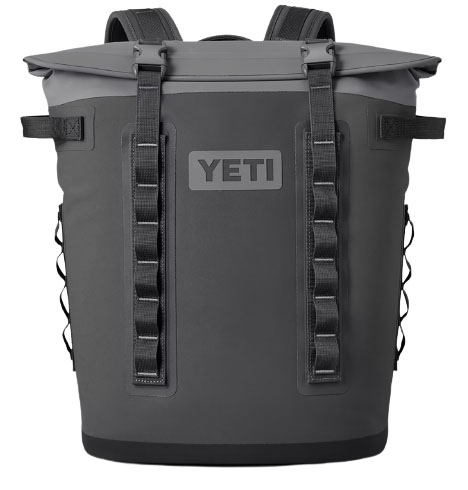 Capacity: 36 cans (without ice)
Capacity: 36 cans (without ice)
Weight: 5 lb. 9.6 oz.
What we like: Class-leading cooling capabilities and typical Yeti build quality.
What we don’t: Very expensive and arguably overkill for many users.
Yeti is synonymous with premium hard-sided coolers, and they’ve translated that top-end performance and standout build quality into the backpack cooler market with the Hopper M20. Like most Yeti designs, the M20 combines thick, closed-cell foam insulation with a burly and hardwearing shell that’s confidence-inspiring and highly resistant to snags and tears. In testing the Hopper M20, we were also impressed by the robust feel of the opening, which uses strong magnets to close, with quick-release buckles to prevent it from leaking during travel. Finally, like the rest of their soft-sided offerings, the M20 boasts the brand’s signature HitchPoint Grid that allows you to easily connect add-ons like their Rambler Bottle Sling or SideKick Dry Gear Case (sold separately). Taken together, it's well built, looks great, and outperforms just about everything else on the market.
However, as with most Yeti products, the Hopper M20 doesn’t come cheap at a whopping $325. For the same price, you can step up to their Tundra 45 hard-sided cooler, which gets the clear edge in ice retention. That said, the Hopper is much easier to carry with generously cushioned shoulder straps and thick grab handles along the sides. Further, similar to our experiences with the soft-sided M30, the M20’s magnet-equipped top is very rigid and can take some force to open wide enough for loading large items (although it does close easily with a gentle push). Finally, the M20 doesn’t compress as well as softer and more flexible options like the Hydro Flask Day Escape above or Icemule Jaunt below. But the Yeti name is hard to beat, and the Hopper M20 has its place for committed day trippers and weekenders looking to maximize durability and cold retention. Yeti also recently introduced the Hopper M12, which can fit 24 cans (without ice) and costs $50 less than the M20.
See the Yeti Hopper M20
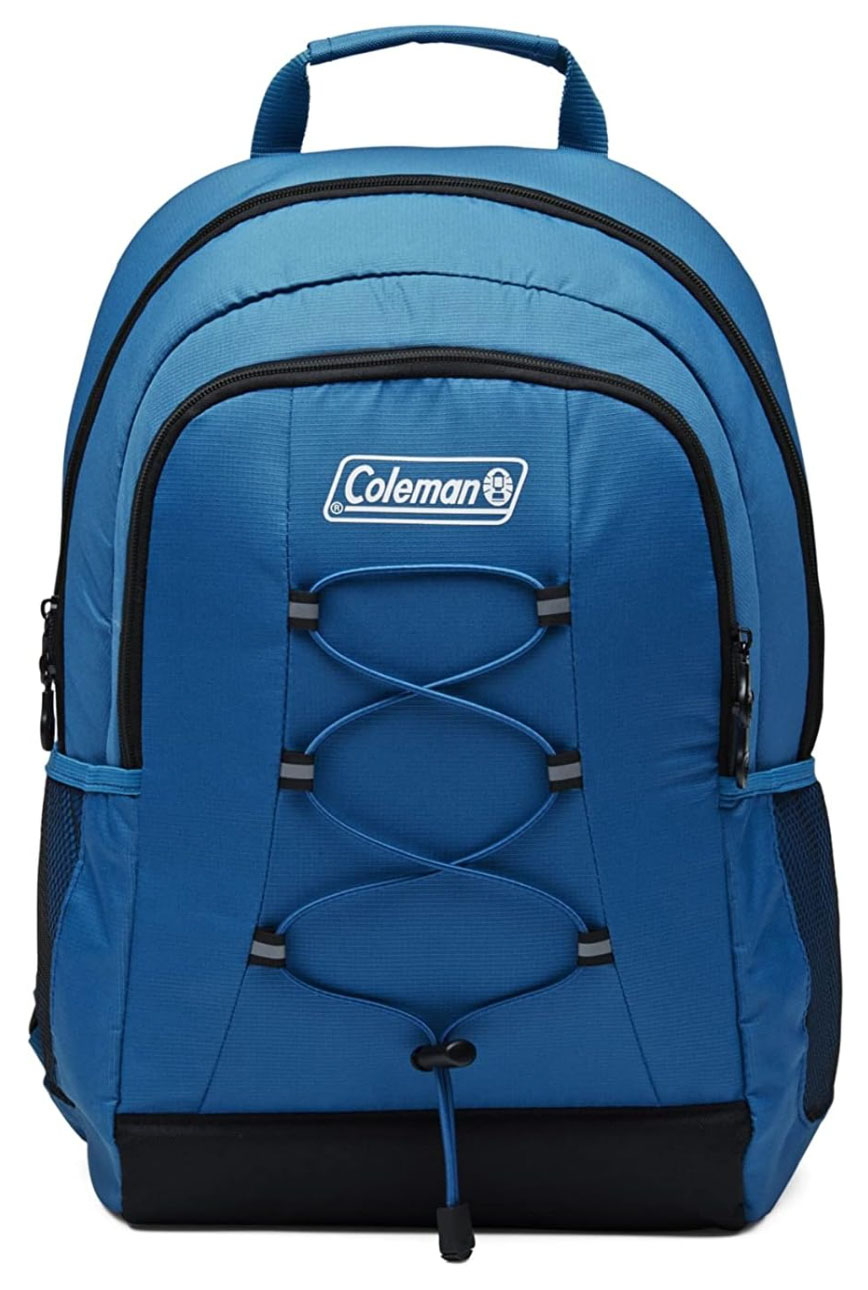 Capacity: 28 cans (without ice)
Capacity: 28 cans (without ice)
Weight: 1 lb. 1.6 oz.
Ice retention: 12 hours
What we like: Most of the features we look for at a hard-to-beat price.
What we don’t: Cheaper-feeling components, limited ice retention, and non-leakproof zipper.
Backpack coolers can get pretty pricey, as evidenced by the $325 Yeti Hopper M20 above and $375 Icemule Boss below. The good news is that there are plenty of budget-friendly options available, including Coleman’s Chiller 28-Can Backpack Cooler here. For around $40 through most retailers at the time of publishing, the Coleman combines a generous 28-can capacity (without ice) with an impressively functional design. Highlights include nicely padded straps at the shoulders and waist (the latter of which is relatively rare in this space), practical zippered storage at the front and inside, a generous zippered opening for easy loading and unloading, large side water bottle pockets, and a bungee system for securing extra gear. All told, the Chiller is a cheap but practical design for day trips to the park or beach and can even pull double duty for short hikes (it looks and feels a lot like a standard backpack).
That said, as with most budget designs, the Coleman Chiller 28-Can Backpack Cooler has a decidedly cheaper feel than many premium (read: pricier) competitors. For starters, despite having welded seams, the Chiller’s zipper isn’t leakproof, which can lead to messes if you’re not careful. Further, while decently insulated for the price, the Coleman’s basic foam insulation won’t keep ice frozen for more than a day at most, and you’ll likely end up with a soupy interior on warm summertime outings in full sun. But you’d be hard-pressed to find a better combination of features and price, making the Chiller a great option for those who prioritize value over waterproofing and standout ice retention. Of note: Coleman’s backpack cooler lineup also includes the more rigid Xpand and canvas Backroads, but we consider the Chiller to be the most well rounded of the bunch.
See the Coleman Chiller 28-Can
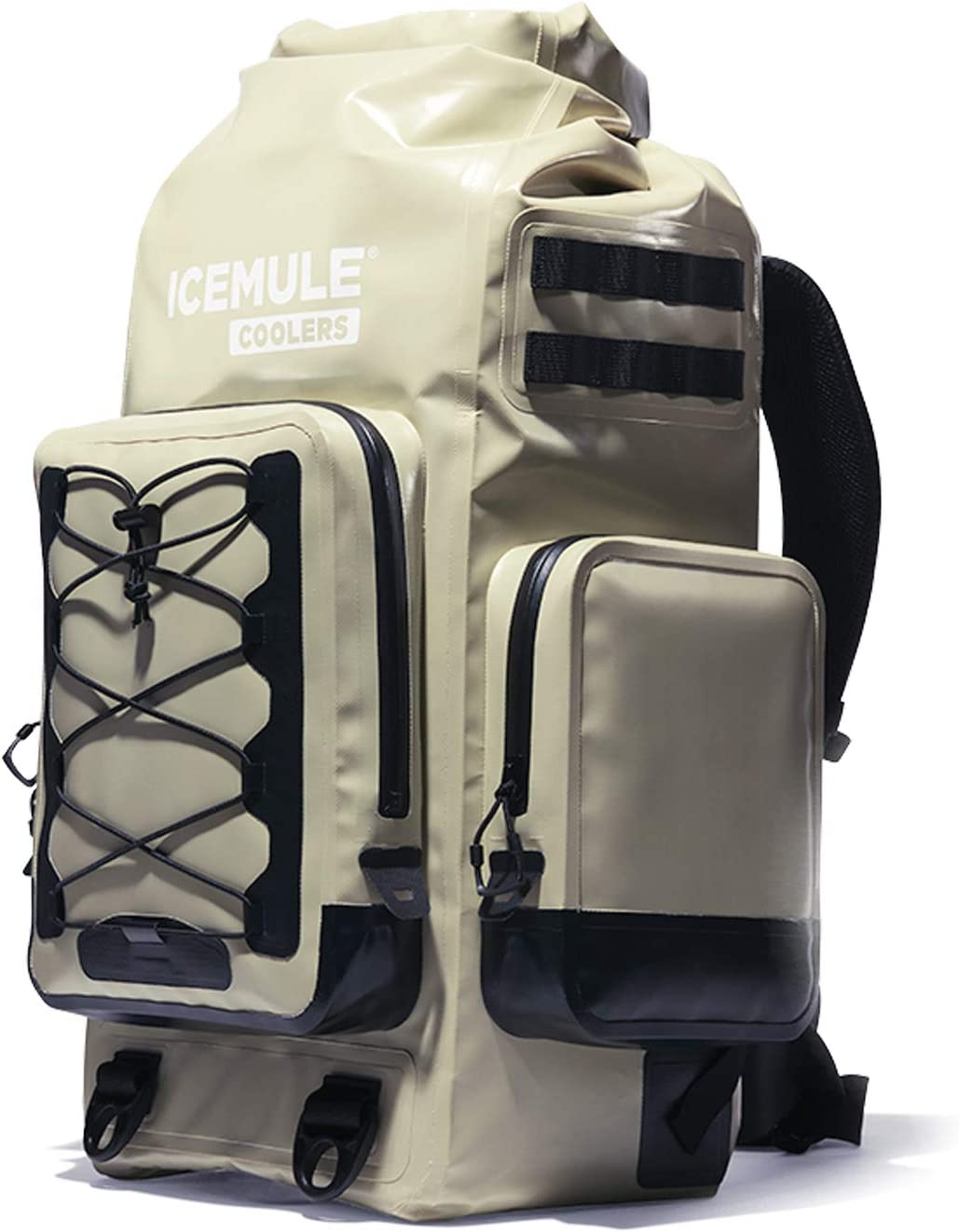 Capacity: 24 cans (with ice)
Capacity: 24 cans (with ice)
Weight: 5 lb.
Ice retention: 24 hours
What we like: Excellent storage, durability, and carrying comfort.
What we don’t: The priciest design on our list and overkill for most.
If you’re in the market for a large and feature-rich backpack cooler, Icemule's Boss is one of the most premium and well-appointed options on the market. The rugged design is built to last with a thick, waterproof exterior, welded seams, coated zippers, and a functional roll-top closure that provides easy access and effectively seals out moisture. Features also abound, including three generously sized zippered pockets (one at each side and one at the front), exterior bungee straps, and plenty of lash points and gear loops for securing smaller items to the outside. The suspension system is also well equipped for handling a full load with thick padding along the shoulder straps and hipbelt and a cushioned mesh backpanel that nicely isolates your back from the contents of the bag. Taken together, it’s one of the most comprehensive and feature-rich backpack coolers on the market and a great match for more gear-intensive outings like fly fishing, kayaking, or paddleboarding (bonus: It floats).
However, in addition to being the most expensive option on our list at $375, the Icemule Boss is pretty hefty at 5 pounds and bulky compared to more malleable options like the Hydro Flask Day Escape above and others below. This lack of packability is limiting for those short on storage space in their garage or vehicle, and the design is decidedly overkill in both price and performance for short day trips like picnics or quick afternoon paddles. For a considerable $175 less, the Day Escape checks most boxes for recreational use while coming in over 2 pounds lighter, and has a much sleeker and more streamlined appearance. But if you plan to haul a lot of extras and can justify the added expense, the Boss leaves very little to be desired in terms of storage and carrying abilities. Of note: The Boss is discounted by around $100 on Amazon at the time of publishing, which is a stellar price for such a durable and feature-rich design.
See the Icemule Boss Backpack Cooler
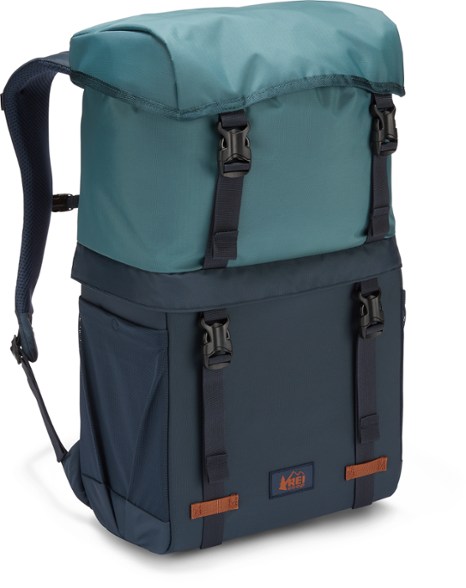 Capacity: 12 cans (with ice)
Capacity: 12 cans (with ice)
Weight: 2 lb. 8 oz.
Ice retention: 40 hours
What we like: A functional two-in-one option with separate gear and cooler compartments.
What we don’t: Limited capacity for food and beverages.
The options above are great for stashing a full day’s worth of food and beverages, but REI’s Cool Trail Split Pack stands out as one of just a few backpack coolers that can accommodate gear, too. The hybrid design is simple but well executed: The bottom compartment is leakproof and rated to keep contents cold for up to 40 hours, while the top portion of the pack is uninsulated and provides a separate area to stuff clothing and other day-hiking necessities. Alternatively, we liked using this upper compartment as a space for non-perishable snacks like crackers and fruit. You can also remove the cooler insert, which makes cleaning a breeze and provides added storage space for gear during travel or short outings from camp. And like most other designs here, the Cool Trail Split Pack takes cues from traditional daypacks with well-padded and adjustable shoulder straps, external pockets for small accessories, and front lash points for securing items to the outside.
What’s not to like with the REI Cool Trail Split Pack’s two-in-one design? The biggest compromise is cooler capacity: The insulated insert can fit just 12 cans with ice, which is much smaller than traditional models like the Hydro Flask Day Escape above, which offers around triple the space (36 cans without ice). REI does sell the standard Cool Trail Pack Cooler, which can fit 20 cans with ice and tacks on a padded hipbelt but costs $20 more. Other hybrid cooler/daypack designs to have on your radar include Carhartt’s Insulated Two Compartment Cooler Backpack and Pelican’s Dayventure Backpack Cooler below, although we think the REI is the most well executed of the bunch (and a significant $210 cheaper than the Pelican). All in all, it’s a functional and innovative option for those who want a cooler and daypack in one—provided you pack light.
See the REI Co-op Cool Trail Split Pack
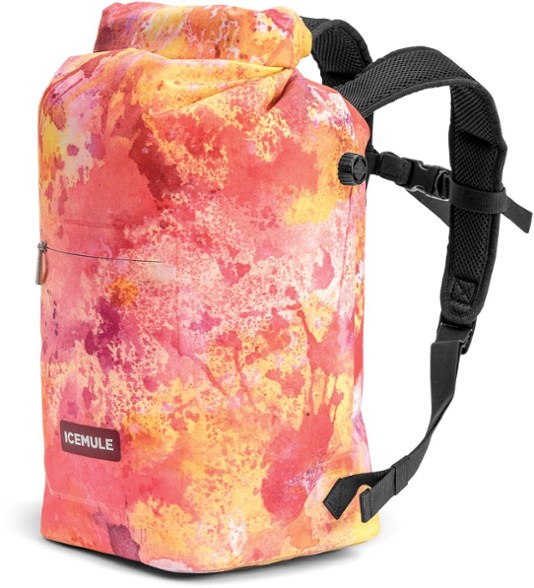 Capacity: 15 cans (with ice)
Capacity: 15 cans (with ice)
Weight: 2 lb.
Ice retention: 24 hours
What we like: Light, streamlined, and compresses small for storage.
What we don’t: Minimalist feature set and subpar ice retention.
Icemule’s Boss above stands out as one of the most premium and feature-rich options on the market, while their Jaunt 15L here will appeal to those at the opposite end of the spectrum: minimalists who prioritize weight and packability. The 15-can capacity is undeniably on the smaller end, but the 2-pound Jaunt is a nice match for grocery trips and farmers’ market runs, keeping a lunch and beverages cold for the day, or short outings to the park or beach. It also compresses down really well for storage thanks to the flexible materials and valve to release excess air, is easy to clean (just wipe down the liner), and comes in a nice selection of vibrant colorways and patterns. And like the Boss and Icemule's own Pro Large below, the Jaunt’s roll-top closure makes it easy to pack and unpack and provides a nice seal against moisture.
That said, there are some inherent compromises with the Jaunt’s minimalist design. First, the Icemule is low on features with just one exterior pocket that’s very small and narrow (it can’t fit a plus-sized smartphone, for instance). It also lacks a hipbelt, which isn’t entirely uncommon in this category (or necessary for such a small pack) but nevertheless appreciated for extended carrying comfort. Finally, the 24-hour listed ice retention feels overly optimistic—in use, we found the Jaunt kept food and beverages cold all day in the sun, but most of the crushed ice had turned to water by late afternoon. For around $70 less, Coleman’s Chiller 28-Can Backpack Cooler above is larger, offers better storage, and stacks up similarly in terms of insulating performance. But if you set reasonable expectations, the Jaunt’s low weight and excellent packability make it a great companion for solo adventurers limited on space.
See the Icemule Jaunt 15L
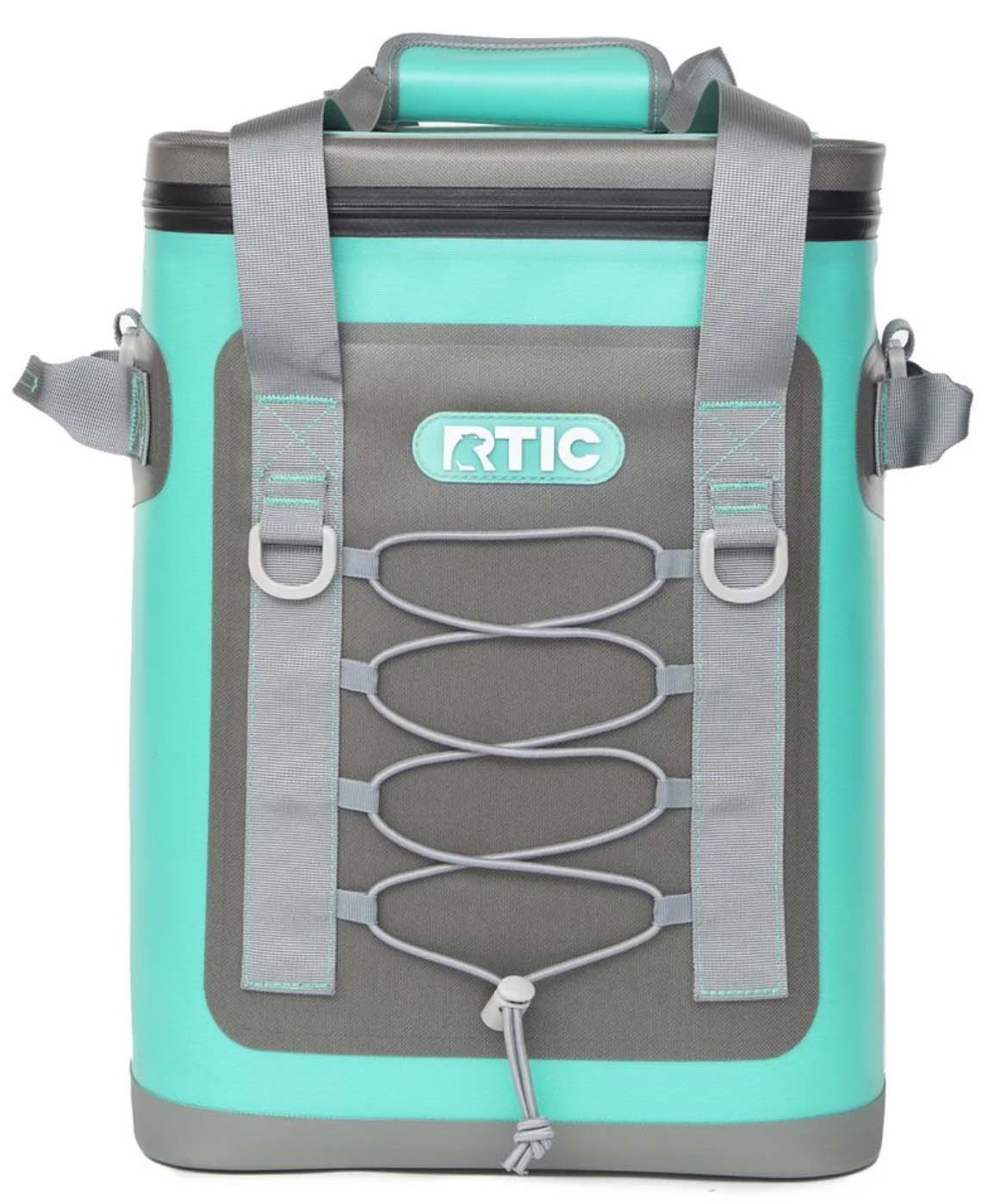 Capacity: 20 cans (with ice)
Capacity: 20 cans (with ice)
What we like: Good price for well-rounded performance; waterproof build also floats.
What we don’t: Only sold online and zipper is pretty stiff.
RTIC may lack the name recognition of brands like Yeti and Hydro Flask, but make no mistake: This Texas-based brand makes high-quality designs that rival the performance of top brands at much cheaper prices. Their Backpack Cooler (offered in both 20- and 30-can capacities) is a case in point: The smaller version here costs around half the price of the Yeti Hopper M20 above but stacks up very competitively in ice retention and overall build quality, including a tough and hardwearing exterior. We also love the tall shape that can fit standard-sized wine bottles and wraparound zipper that provides comprehensive access and visibility into the main compartment. Finally, the RTIC is both waterproof and floats, giving it added appeal for water-based activities like kayaking and paddleboarding.
What’s not to like with the RTIC Backpack Cooler? Unlike many other brands here, RTIC sells direct to consumer, meaning their products are only available online. This allows them to keep prices lower than the competition, but you won’t be able to walk into the store and get a feel for the cooler before buying. Availability can also be hit or miss, especially during peak season. And a couple final nitpicks: The top zipper is rather stiff, requiring some force to open, and the rigid backpanel detracts from carrying comfort. But we keep coming back to value: The RTIC undercuts the high-end competition considerably with only minor performance compromises. And if you’re looking for something a little different, And if you’re looking for something a little different, RTIC also offers their Lightweight Backpack Cooler ($45) and Chillout Backpack Cooler ($60), the latter of which is a slightly cheaper but viable alternative to the REI Cool Trail Split Pack above.
See the RTIC Backpack Cooler
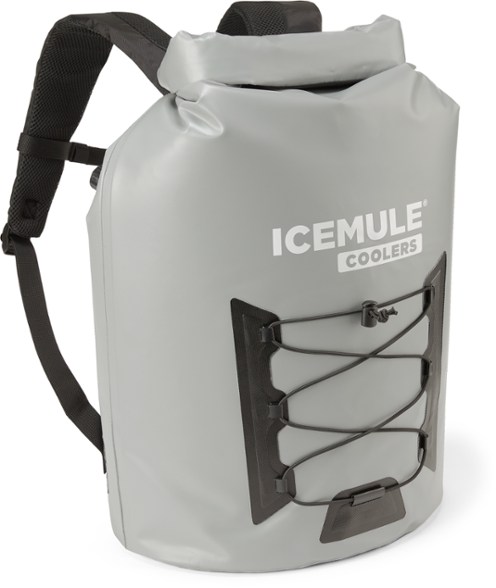 Capacity: 18 cans (with ice)
Capacity: 18 cans (with ice)
Weight: 3 lb. 8 oz.
Ice retention: 24 hours
What we like: Great durability and waterproofing at an affordable price.
What we don’t: Less structure than many competitors.
Splitting the difference between the fully featured Boss and packable Jaunt above is Icemule's Pro Cooler. Offered in 23, 33, and 40-liter capacities, the smallest "Large" version is our favorite: It’s manageably sized with an 18-can capacity (including ice), the padded shoulder straps keep it comfortable even when loaded down, and the ventilated backpanel does a good job keeping you cool while moving. It’s also very well suited for rough use with a thick (1,000D) waterproof build, welded seams, and roll-top closure that effectively seals out water and makes it easy to snug down over a half-full load (the air valve at the top helps, especially when you want to roll the cooler up for storage). Finally, we love the stretchy bungee system at the front, which is great for securing bulkier items like a lightweight jacket or small towel.
One sacrifice of the Icemule Pro's dry bag-like construction is that it lacks structure. Compared to many other designs here, the Pro can feel a bit sloppy if loaded improperly (the upside is it can be compressed with the roll-top closure). This also translates to less insulating power, although the Pro’s 24 hours of ice retention is actually fairly good in this category. In comparing the Pro with other backpack options, you can go colder with alternatives like Yeti’s Hopper M20 or more modern with the Hydro Flask 20 L Day Escape above, both of which offer more structure and leak protection. But where the Icemule Pro stands apart is value: It undercuts most of the competition in price while still delivering solid performance and durability.
See the Icemule Pro Large
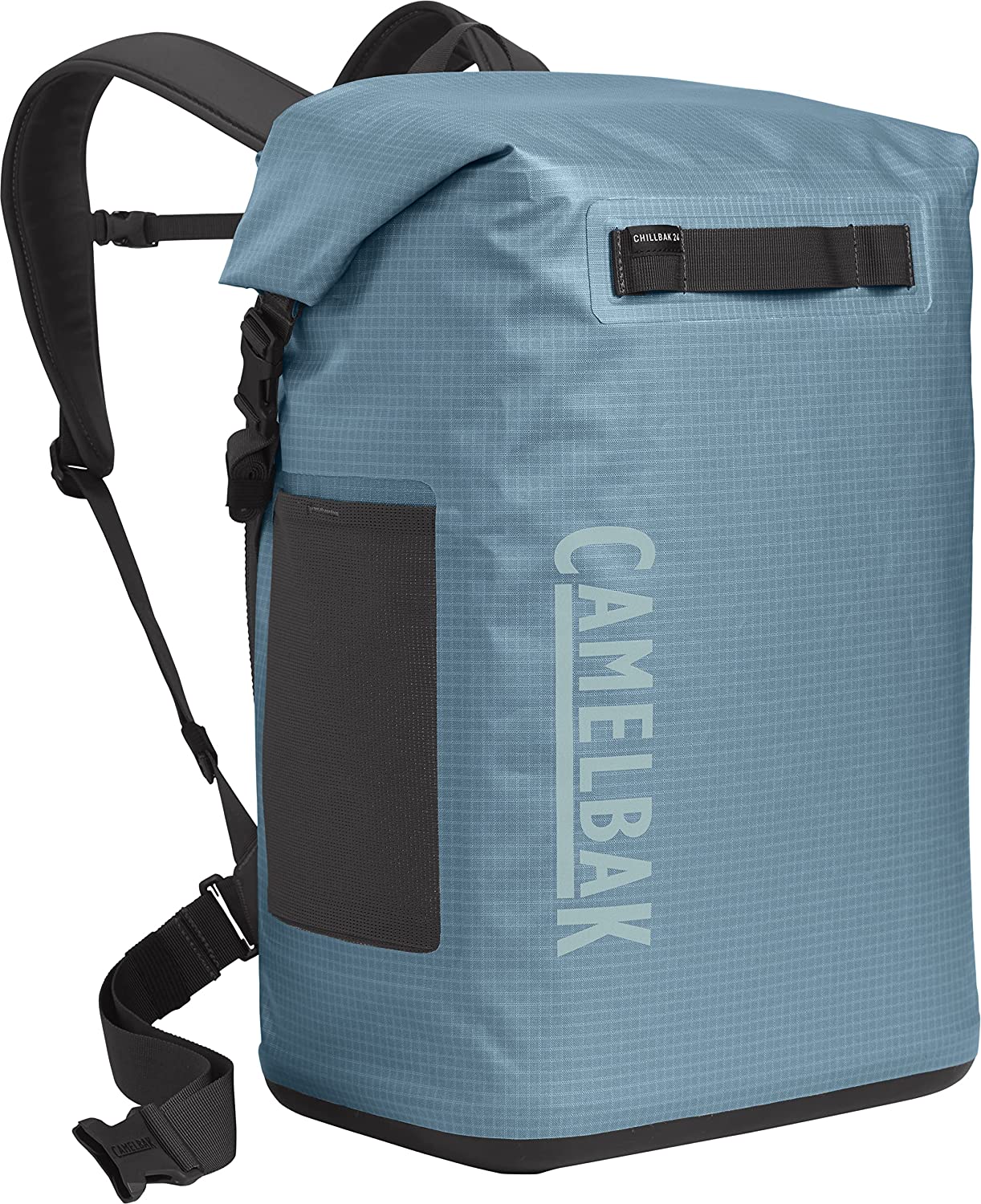 Capacity: 24 cans (with ice)
Capacity: 24 cans (with ice)
Weight: 4 lb. 6.5 oz.
Ice retention: 72 hours
What we like: Great carrying comfort and insulating performance with an integrated hydration reservoir.
What we don’t: Large, bulky, and bladder design could be improved.
CamelBak is best known for their quality hydration reservoirs, and we think they did a great job integrating that tech into their ChillBak Pack 30, which was released in early 2022. The most notable feature is the included 6-liter Fusion bladder positioned behind the backpanel, which is accessible via a U-shaped zipper and comes with a handy spigot at the side for quick fill-ups. The rest of the design is fairly standard but thoughtfully executed, including a roll-top closure for easy access, sturdy base that provides structure even when empty, well-padded backpanel and shoulder straps, and exterior side pockets and gear loops for divvying up smaller items and attaching gear. Insulating performance is also impressive in this category: CamelBak lists the ice retention at 72 hours, which lines up pretty well with our experiences during testing. All told, it’s a promising design with unmatched appeal for group outings like single-pitch climbing or spending a day at the beach when you’ll want to keep everyone hydrated.
All that said, we do think there’s some room for improvement with the ChillBak 30. Specifically, the bladder is difficult to fill while secured in the pack and takes some effort to remove (you’ll need to undo the buckle and disconnect the hose from the base of the reservoir, which takes some patience and finesse given the small space). The side pockets are also prohibitively small and narrow (it’s almost impossible to fit a water bottle or cell phone inside), and the exterior is relatively barebones with just a couple of lash points and single grab handle at the upper back. Finally, the ChillBak is decidedly large, bulky, and expensive at $325, although the 6-liter Fusion reservoir is a $75 investment on its own, which does help bridge the gap. All told, it’s not a perfect first iteration, but we applaud CamelBak for their ingenuity and consider the ChillBak one of the most innovative options on the market.
See the CamelBak ChillBak Pack 30
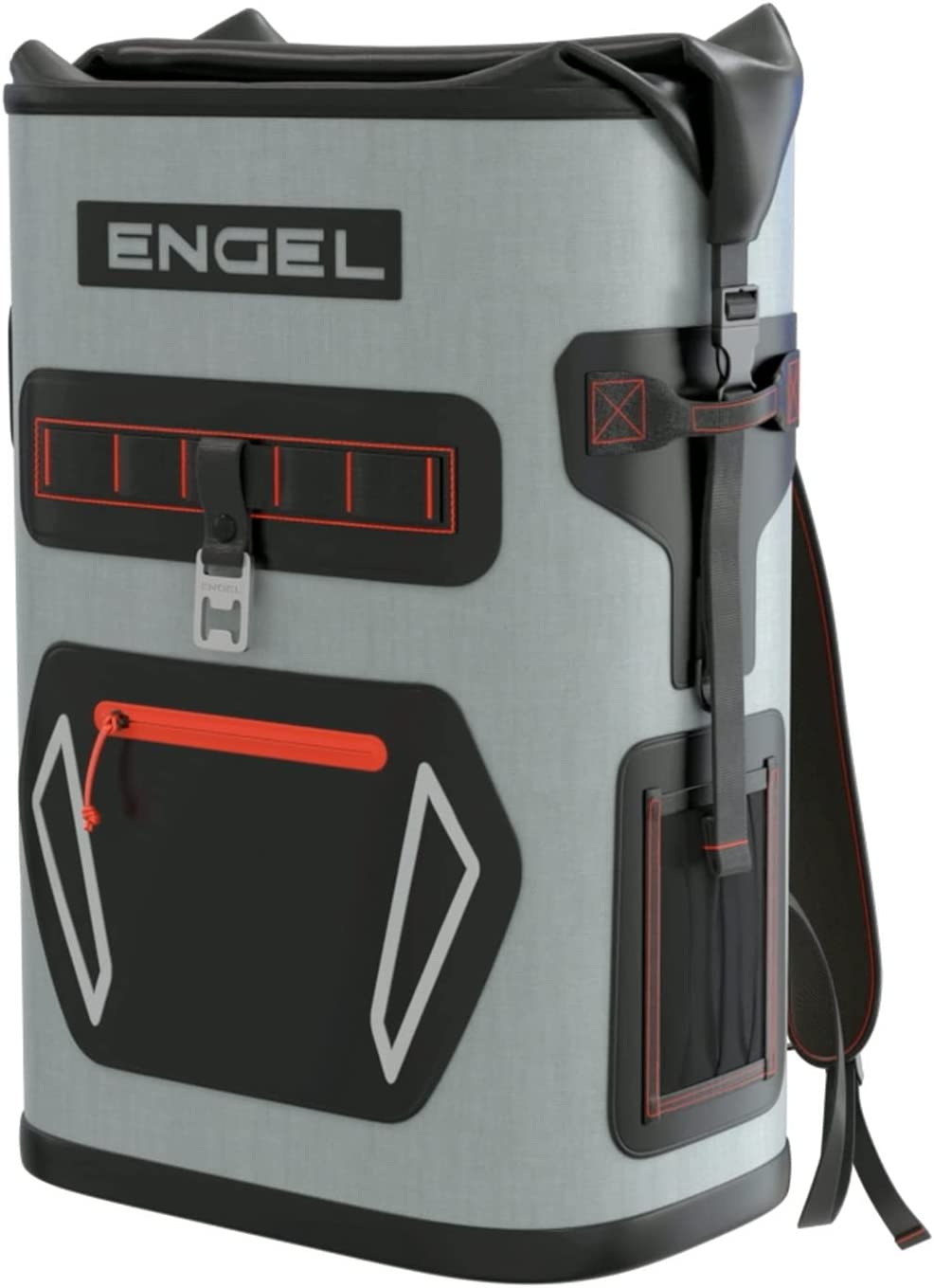 Capacity: 24 cans (with ice)
Capacity: 24 cans (with ice)
Weight: 3 lb. 8 oz.
Ice retention: 72 hours
What we like: Great insulating performance and durability in a high-end package.
What we don’t: On the bulky and pricey side.
Engel’s HD series is a standout in the soft-sided cooler market, and their Roll Top High Performance Backpack Cooler marks the brand’s first foray into the backpack cooler space. Like the HD series, the Roll Top sports a welded construction (most competitors are sewn) that’s designed to seal in cold and minimize leaks and is noticeably robust with an 840-denier shell and TPU film to reinforce the front and back. The wide, roll-top opening is also one of our favorites: The top of the pack is rigid, allowing you to unfold the opening to load and unload the cooler without the collar flopping around awkwardly. Finally, the feature set is very thoughtfully executed, including multiple grab handles, an integrated bottle opener (fairly uncommon in this space), front and side pockets, D-rings and side straps for securing the cooler to a boat and attaching gear externally, and even a vacuum valve for releasing excess air.
In addition to its functional feature set and great long-term durability, the Engel Roll Top High Performance Backpack Cooler is also one of the best insulators on our list with a claimed three days of ice retention. We always recommend erring on the conservative side with these specs, but the Engel’s welded construction, vacuum valve, and high-quality insulation make it better-equipped to seal in cold than many other competitors. That said, these features do add considerable bulk: The rigid design doesn’t compress down for storage and will take up a good amount of space in your garage or trunk. It’s also fairly expensive at $190, although the high-end build and features line up well with the price. In the end, the Roll Top falls into a nice middle ground, offering better durability and storage than the similarly priced Hydro Flask Day Escape above while saving you a considerable $185 over the unbounded Icemule Boss.
See the Engel Roll Top High Performance
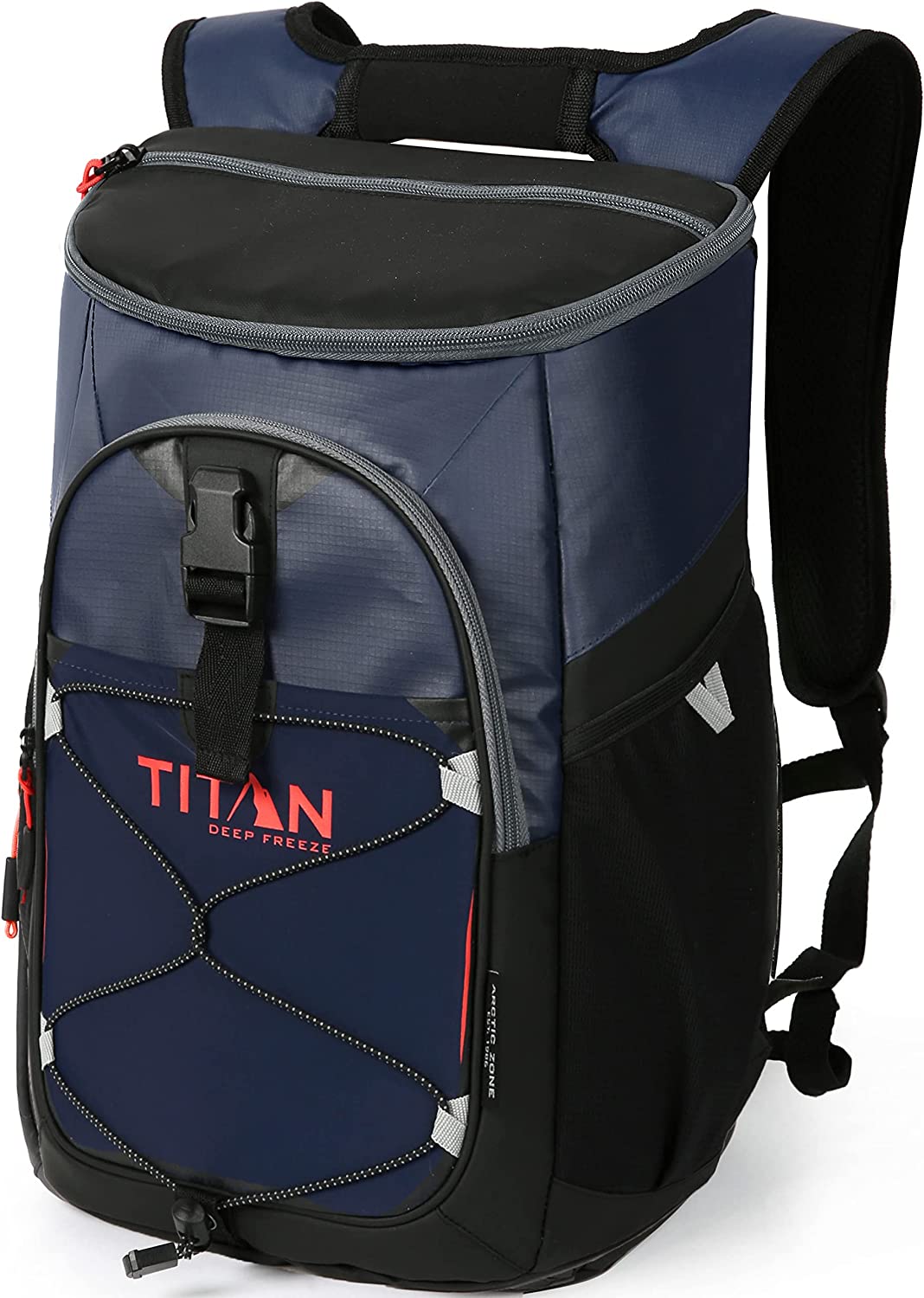 Capacity: 24 cans (without ice)
Capacity: 24 cans (without ice)
Weight: 1 lb. 8.5 oz.
Ice retention: 48 hours
What we like: User-friendly and very approachable price point.
What we don’t: Less durable and well sorted than premium alternatives.
Joining Coleman’s Chiller 28-Can Backpack Cooler above is another budget-friendly option to have on your radar: Arctic Zone’s Titan Deep Freeze 24 Can. For a few dollars more than the Coleman (on Amazon at the time of publishing), the Titan ticks most of the boxes we look for, including decent insulating capabilities for the price and functional storage for day trips. Like the Chiller, the Deep Freeze boasts stretchy mesh side pockets that can fit standard-sized (24-oz.) water bottles, a nicely sized pocket at the front, and a handy bungee system for securing extra gear. We also like the addition of the top zippered pocket, which is a convenient space to stow smaller valuables and accessories (the Coleman only has one exterior pocket at the front). The Chiller can fit a few more cans and tacks on a padded hipbelt, but the Deep Freeze comes in more colorways and stacks up competitively in most other areas.
As we touched on above, cost often correlates closely with insulating performance, and the Titan Deep Freeze expectedly falls a little short of the high-end competition in terms of cooling capabilities. For reference, Arctic Zone lists the cooler’s ice retention at two days, but we'd put it closer to a day at maximum in summertime heat (similar to the Coleman mentioned above). Build quality is another concession at this price point: The Deep Freeze has a cheaper feel overall, from the reflective interior lining to the thin mesh water bottle pockets and non-leakproof main zipper. But again, if you set reasonable expectations, the Arctic Zone is an affordable but fully capable option for day trips, picnics, or keeping a lunch chilled while on the go.
See the Arctic Zone Titan Deep Freeze 24 Can
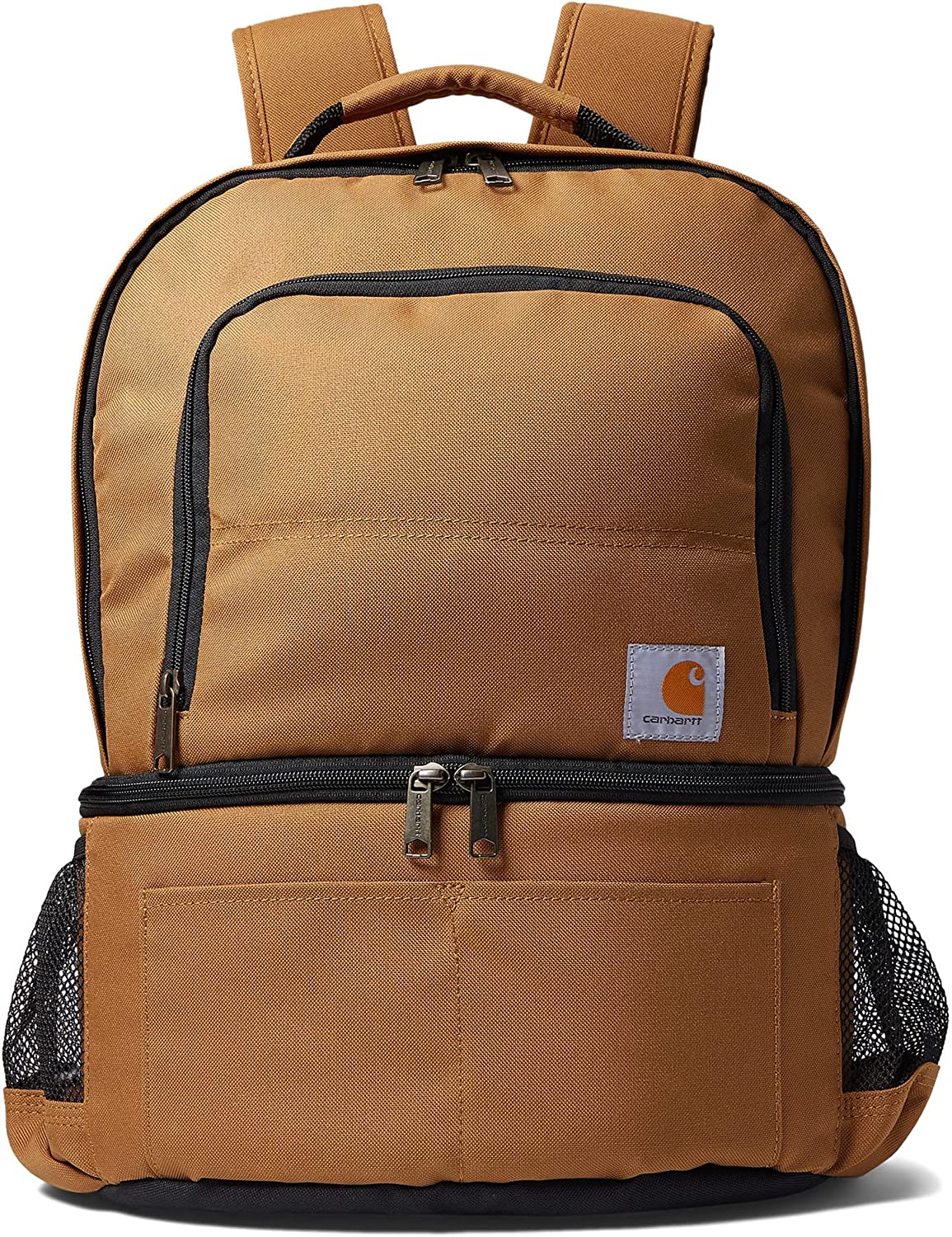 Capacity: 12 cans (with ice)
Capacity: 12 cans (with ice)
Ice retention: 8 hours
What we like: Cheaper and more features than the REI Cool Trail Split above.
What we don’t: Cooler compartment lacks structure and can get crushed under a full load.
Carhartt is well known for their rugged cold-weather gear and clothing, and the Insulated Two Compartment Cooler Backpack is a nice reflection of their utilitarian focus. Like the REI Cool Trail Split Pack above, the Carhartt is highlighted by its two-in-one daypack/cooler design: The upper compartment is generously sized for stashing layers and gear with interior mesh pockets for divvying up smaller necessities and snacks, while the base is fully insulated and can fit 12 cans with ice. The Carhartt also looks and feels like a traditional backpack more than most designs here, including large mesh water bottle pockets at the sides, a zippered front compartment with dedicated pockets for valuables and keys, and a manageable shape with decent padding for good all-day carrying comfort. Added up, it’s a nice option for packing a lunch and layers while working outside or taking on short adventures close to home.
Where does the Carhartt Insulated Two Compartment Cooler Backpack fall short? First is ice retention, which is listed at just 8 hours (the shortest on our list). For $15 more, the REI Cool Trail Split Pack above is rated to keep food and beverages cold for up to 40 hours. It also offers easier access via the top roll-top closure, and we appreciate that the cooler insert is removable for cleaning. Another drawback is the Carhartt’s flexible build: You’ll want to be careful not to overload the upper gear compartment, as it can crush the contents of the lower cooler portion (this isn’t an issue with the more rigid REI). But if you pack strategically and only need to keep food and beverages cold for the afternoon, the Carhartt will get the job done while looking the part outdoors.
See the Carhartt Insulated Two Compartment Cooler Backpack
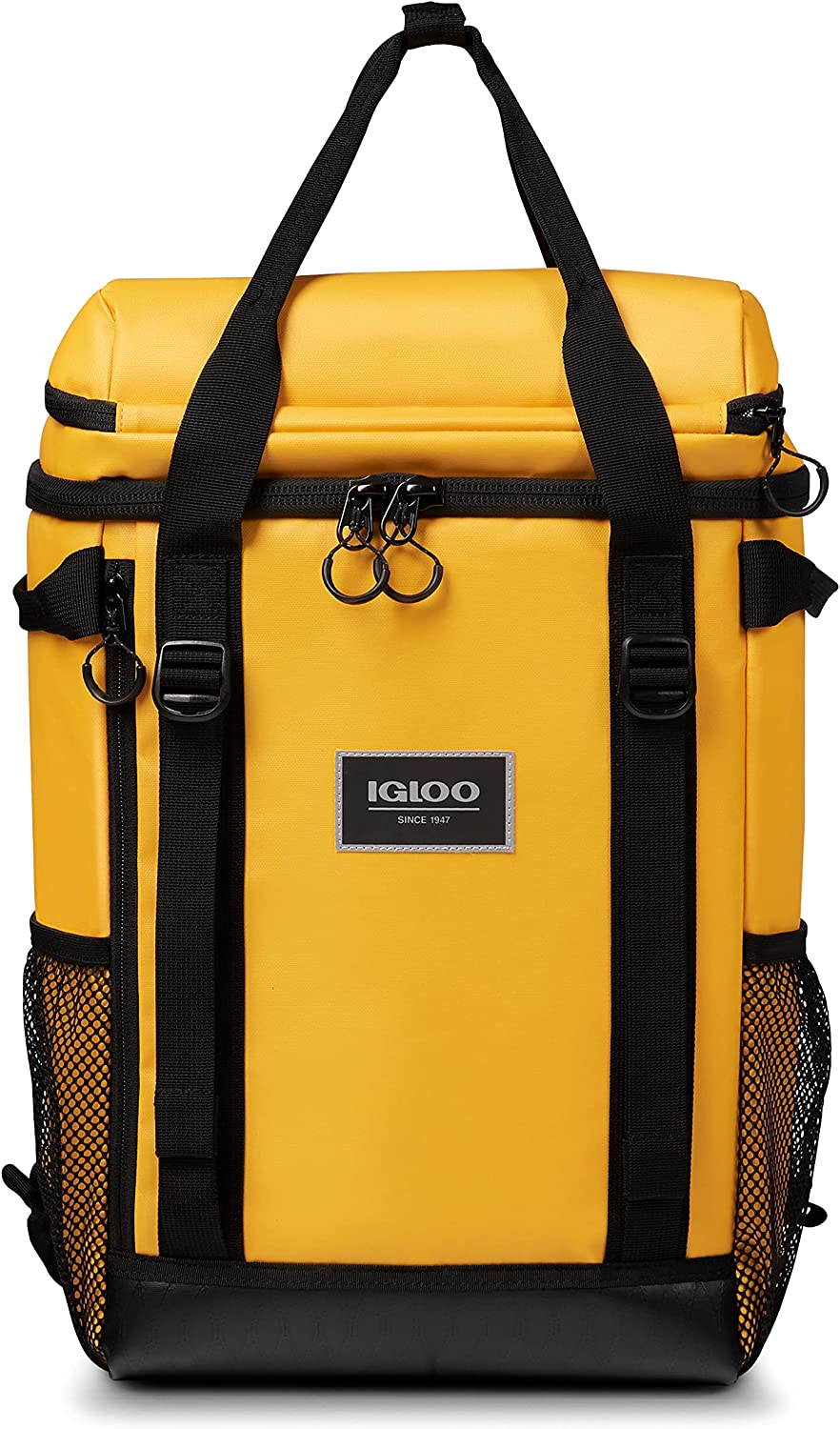 Capacity: 24 cans (without ice)
Capacity: 24 cans (without ice)
Weight: 2 lb. 1.4 oz.
What we like: Multiple carry options and nice assortment of functional features.
What we don’t: Overpriced for the level of performance.
Igloo’s Pursuit 24-Can Backpack might look relatively unassuming on the outside, but this cooler is jam-packed with features. The double-zipper lid opens wide for easy access to the interior, you get multiple carry options via the shoulder straps or grab handles at the top and sides, and the vertical, upright shape can easily accommodate wine bottles. All of the smaller details are equally well sorted, from the zippered mesh pocket under the lid for utensils to the reinforced base, reflective detailing for visibility in the dark, and handy bottle opener built into the shoulder strap. The exterior front zippered pocket is also one of the largest we’ve seen (it can fit a tablet), and it’s even lined to allow for easy cleaning and assurance against leaks.
That said, apart from the full feature set, the Igloo Pursuit doesn’t really stand out in any other area. The top zipper can be difficult to open and close (many users report needing two hands to zip and unzip), and the basic insulation won’t keep ice frozen for more than a day at maximum. Although entirely subjective, the Pursuit also has a fairly dated-looking exterior that lacks the modern appeal of designs like the Hydro Flask Day Escape above. Finally, at $160, the Igloo feels a little overpriced for what you get. For the same amount, RTIC’s Backpack Cooler 20 Can above offers a sizable boost in insulating performance and durability in a more streamlined package. But the Igloo has better storage for stashing accessories, which could be enough to sway some. For a step up in cooling capabilities, we also like their Trailmate 24-Can Backpack, which has a welded exterior but is heavier and less feature-rich than the Pursuit.
See the Igloo Pursuit 24-Can Backpack
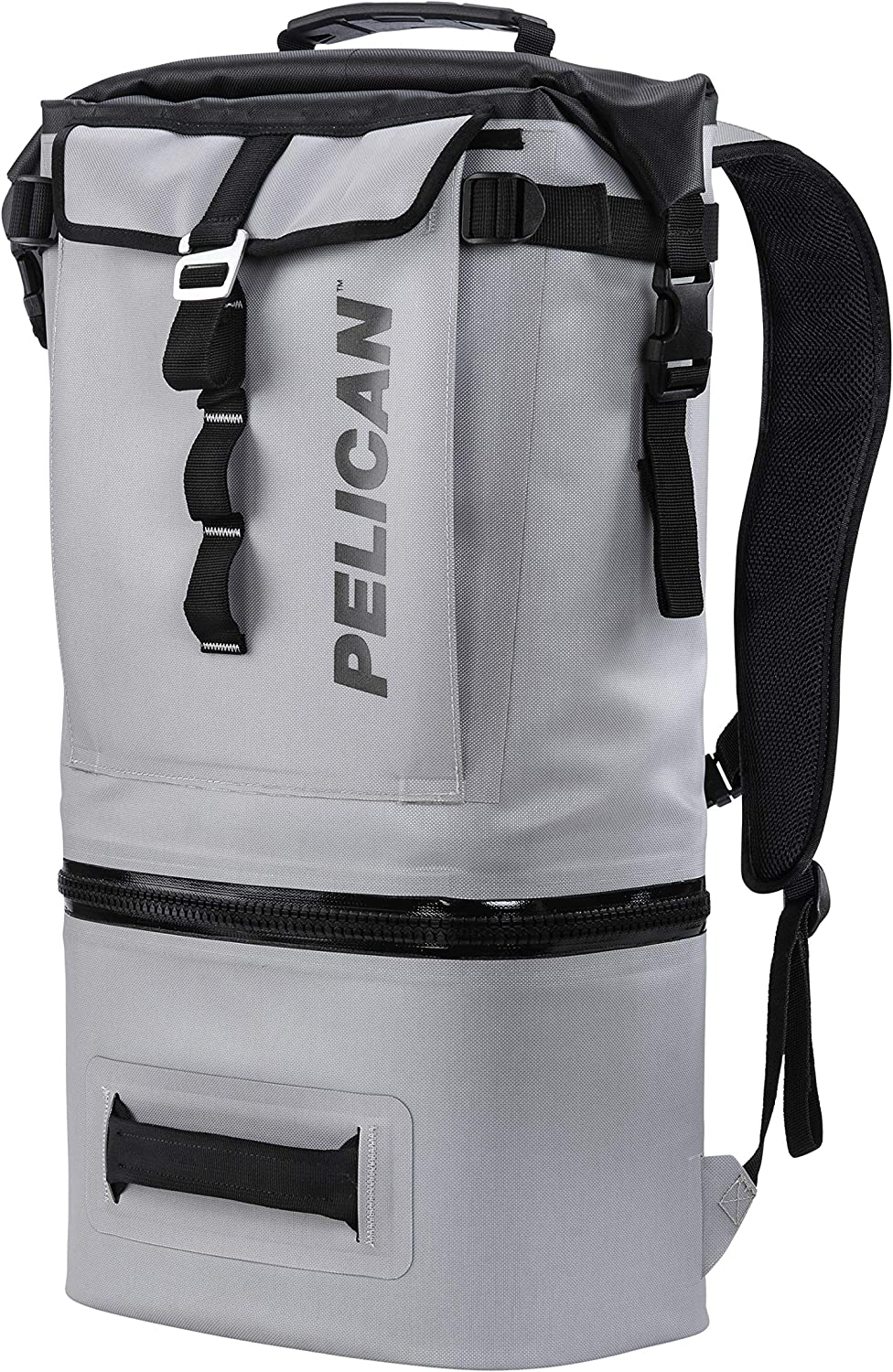 Capacity: 6 cans (with ice)
Capacity: 6 cans (with ice)
Weight: 9 lb. 4.8 oz.
What we like: More durable and comfortable than the REI Cool Trail Split above.
What we don’t: Also much heavier and less cooler capacity.
Last but not least is Pelican’s Dayventure Backpack Cooler, which slots in as a premium alternative to hybrid cooler/daypack designs like the REI Cool Trail Spilt Pack and Carhartt Insulated Two Compartment Cooler Backpack above. Unlike both of those models, the Pelican is fully insulated, allowing you to use the entire capacity for food and beverages on group adventures or stuff gear and non-perishables in the upper compartment on solo outings. Like the Engel Roll Top High Performance above, the Dayventure also sports a functional roll-top opening and rigid collar that allow easy access to the interior while maintaining its structure. And durability is top-notch, including a rigid 840-denier TPU shell and compression-molded base for setting the pack down on rough and rocky surfaces. Finally, the shoulder harness and backpanel design is one of the beefiest on our list, with ample mesh and padding for good all-day carrying comfort and breathability.
Everything about the Pelican Dayventure Backpack Cooler exudes quality, from the well-cushioned straps and backpanel to the leak-resistant main zipper and rubberized carry handle at the top. That said, it’s the heaviest option on our list by a wide margin at a whopping 9 pounds 4.8 ounces, and not everyone will love the large and bulky design, which doesn’t compress down for storage and takes up a good chunk of space in a garage or trunk. Finally, despite its big and hefty build, the Pelican can only fit six 12-ounce cans with ice in the lower cooler compartment, which is less than competitors like the REI Cool Trail Split Pack and Carhartt Insulated Two Compartment Cooler Backpack, both of which can fit 12 cans with ice. It's true the Pelican is the only model of the bunch that allows you to utilize both compartments for food and beverages (and it’s by far the most durable option), but that negates some of the two-in-one appeal.
See the Pelican Dayventure Backpack Cooler
| Cooler | Price | Capacity | Weight | Other Sizes | Ice* |
|---|---|---|---|---|---|
| Hydro Flask 20 L Day Escape | $200 | 36 cans (without ice) | 2 lb. 10.1 oz. | None | 36 hours |
| Yeti Hopper M20 | $325 | 36 cans (without ice) | 5 lb. 9.6 oz. | 24 cans | Unavail. |
| Coleman Chiller 28-Can | $40 | 28 cans (without ice) | 1 lb. 1.6 oz. | None | 12 hours |
| Icemule Boss | $375 | 24 cans (with ice) | 5 lb. | None | 24 hours |
| REI Co-op Cool Trail Split | $80 | 12 cans (with ice) | 2 lb. 8 oz. | None | 40 hours |
| Icemule Jaunt 15L | $110 | 15 cans (with ice) | 2 lb. | None | 24 hours |
| RTIC Backpack Cooler 20 Can | $160 | 20 cans (with ice) | Unavail. | 30 can | Unavail. |
| Icemule Pro Large | $135 | 18 cans (with ice) | 3 lb. 8 oz. | 24, 36 cans | 24 hours |
| CamelBak ChillBak Pack 30 | $325 | 24 cans (with ice) | 4 lb. 6.5 oz. | None | 72 hours |
| Engel Roll Top High Performance | $190 | 24 cans (with ice) | 3 lb. 8 oz. | None | 72 hours |
| Arctic Zone Titan Deep Freeze | $45 | 24 cans (without ice) | 1 lb. 8.5 oz. | None | 48 hours |
| Carhartt Two Compartment Cooler | $65 | 12 cans (with ice) | Unavail. | None | 8 hours |
| Igloo Pursuit 24-Can | $160 | 24 cans (without ice) | 2 lb. 1.4 oz. | None | Unavail. |
| Pelican Dayventure | $290 | 6 cans (with ice) | 9 lb. 4.8 oz. | None | Unavail. |
*Editor's note: This number represents claimed ice retention. In real-world use and depending on the specific circumstances, we've found these times to be quite a bit lower. More in our "Ice Retention and Cooling Capabilities" section below.
Backpack coolers are a somewhat niche category: They fall under the soft-sided cooler umbrella and are a purpose-built option for those who want the easy portability of a backpack with the insulating performance of a cooler. In practice, we’ve found them great for short approaches to a picnic spot or fishing hole and basecamping by the water for an afternoon. They can also be a great supplement to a larger hard-sided model, providing additional space to store extra food or beverages when camping with a bigger group.
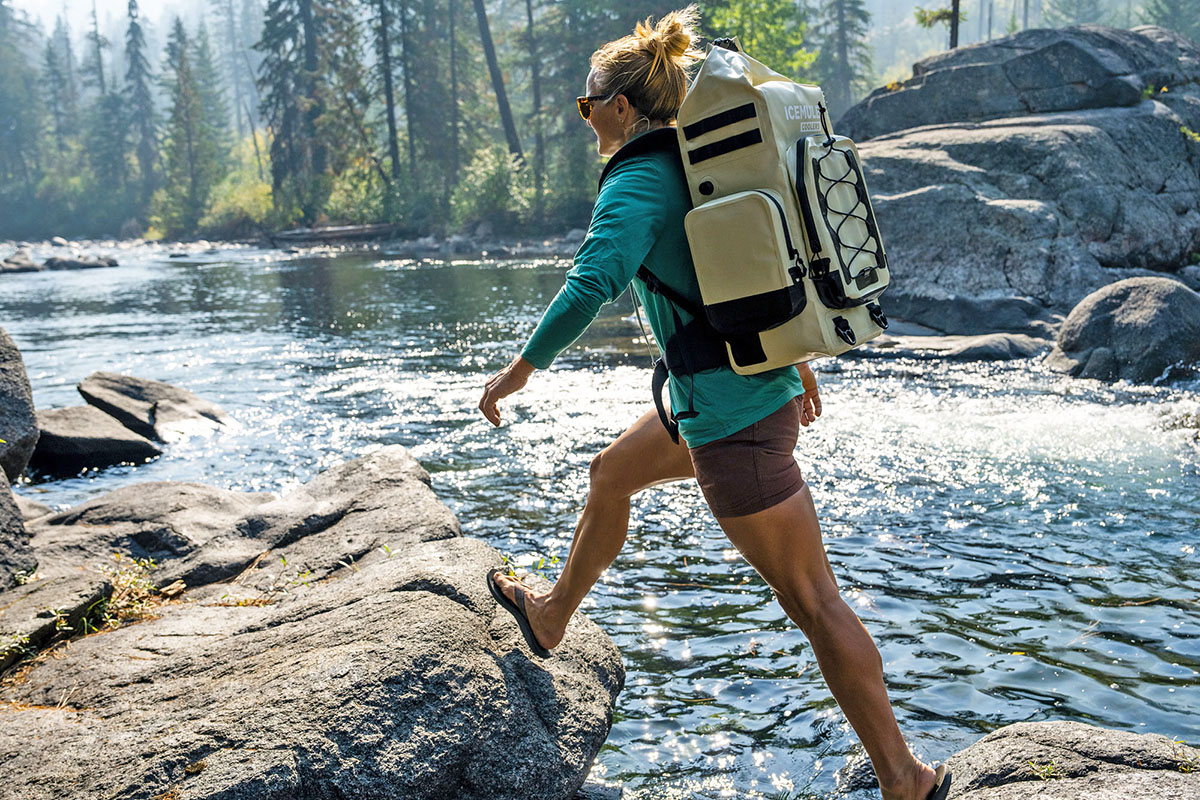
That said, backpack coolers have limited appeal for overnight trips and multi-day outings. Unlike hard-sided models that can keep food and beverages cold for days (or even weeks) on end, backpack coolers aren’t built to keep contents cold for more than a few days at maximum. They’re also generally much smaller than hard-sided designs, typically offering around 30 liters of capacity at the high end. Finally, backpack coolers are fairly expensive considering their modest storage capacity and all-around performance. But if hands-free hauling is a priority for your done-in-a-day adventures, they're a worthy purchase.
As you'll see in your research, there isn't a universally adopted method for measuring a cooler's interior capacity. Some use cans as a unit of measure, while others use liters, quarts, or gallons. That said, “cans” is the most commonly listed for backpack coolers (hard-sided models are generally listed in quarts), and we’ve utilized that spec throughout this article whenever available. That said, there are still some discrepancies to be aware of, the biggest of which is whether or not ice is included in that estimate. We did our best to clarify in the write-ups and comparison table above, but it’s an important distinction to keep in mind when shopping for a backpack cooler.
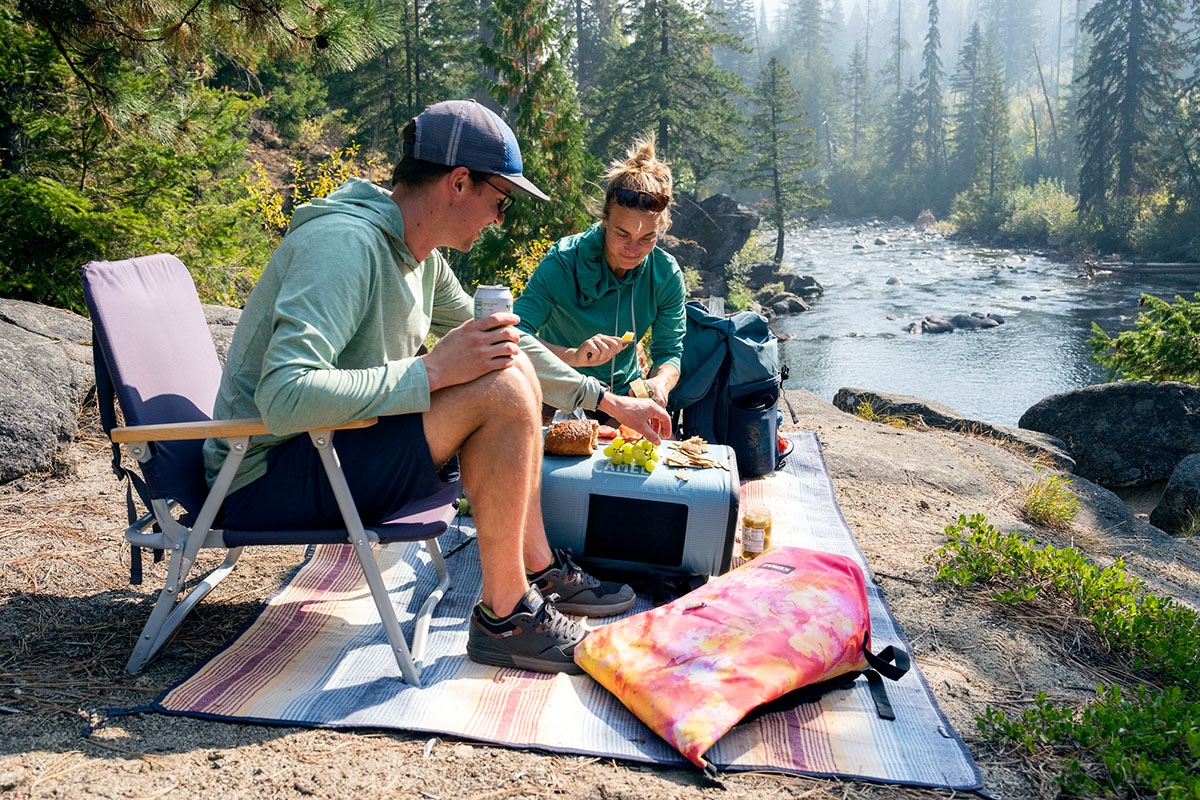
For reference, the largest options above are the Hydro Flask 20 L Day Escape and Yeti Hopper M20, both of which can fit up to 36 12-ounce cans without ice, while the smallest is Pelican’s Dayventure Backpack Cooler, which Pelican estimates can fit just 6 cans with ice. In our experience, the sweet spot is often right in the middle, with many of our most frequently used backpack coolers offering space for around 18 to 24 cans with ice. These designs are sufficiently sized for day trips or weekend road trips, manageable in terms of weight and portability, and won’t take up a ton of space in your vehicle or garage.
As we covered above, backpack coolers are relatively poor performers in terms of ice retention—most can only keep contents cold for a day or two at maximum in ideal (read: favorable) conditions. External factors play a huge role here, including air temperature, how frequently you open the lid, the amount of sunlight you expose the cooler to, and how much ice you use (most brands recommend a 2:1 ice-to-food ratio). For maximum performance, you can pre-chill your cooler prior to loading it up by filling the interior with freezer packs and/or ice for at least a few hours to bring its interior temperature down. When you’re ready to hit the road, swap in some pre-chilled packs or fresh ice at that optimal ratio along with your drinks and food.
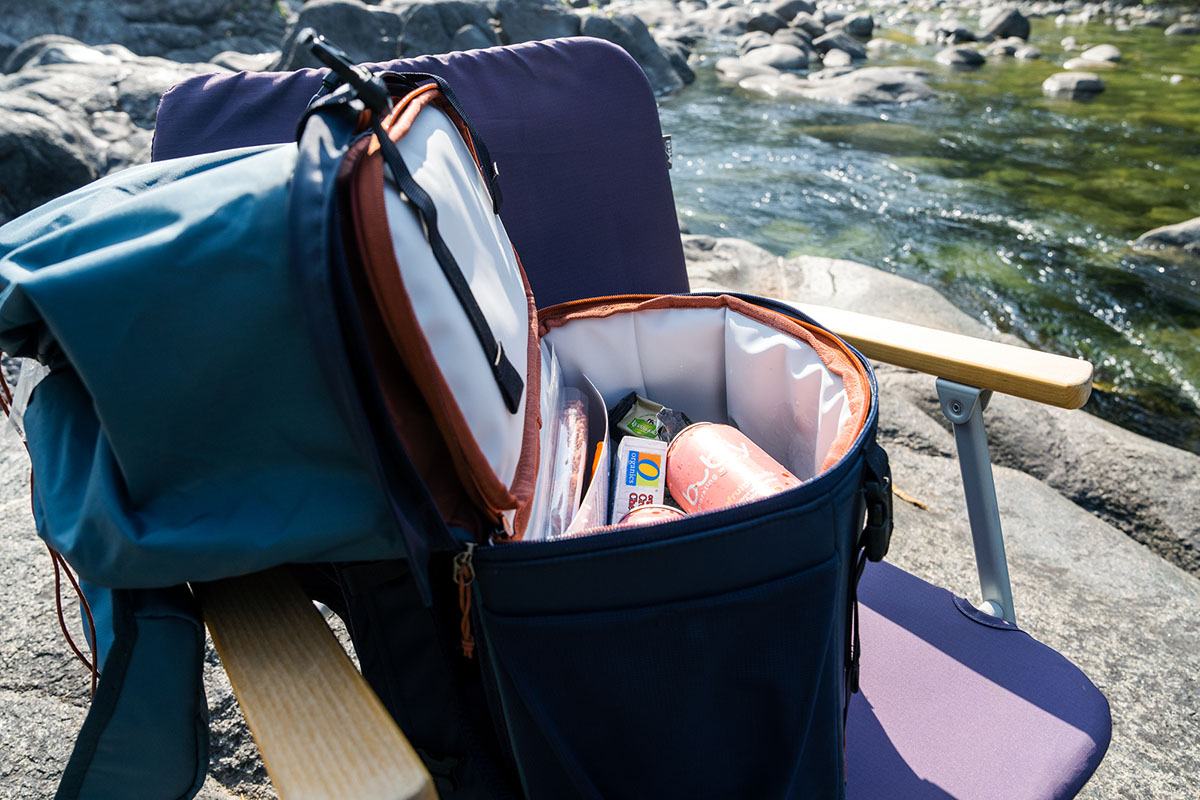
Most cooler manufacturers provide a “claimed ice retention” spec in their product listings. From our list above, times range from just 8 hours at the low end for the Carhartt Insulated Two Compartment Cooler Backpack to three days at the high end for Engel’s Roll Top High Performance and CamelBak’s ChillBack Pack 30 (24 hours is pretty standard). That said, we always take manufacturer-provided specs with a grain of salt, and there isn’t an established, standardized test here. In practice, most of the claimed ice retention times feel quite inflated to us, perhaps due to extremely favorable testing conditions (storing the cooler inside with the lid closed in cool temperatures, for example). If we had to generalize it, we would say that you should expect to get approximately half of the claimed ice retention time in real-world use, give or take a bit depending on your specific circumstances.
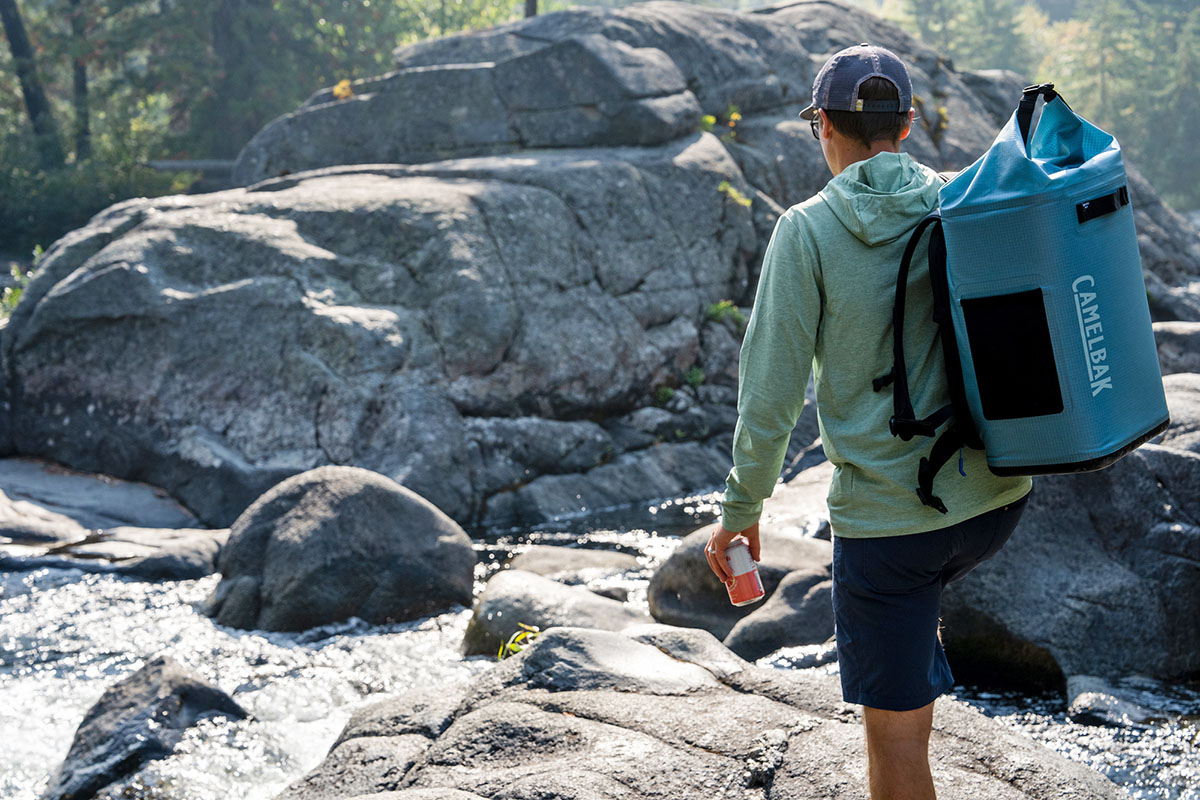
Weight and portability are two clear reasons to choose a backpack cooler over a hard-sided design: They’re far lighter and easier to tote around, whether you’re hiking to your favorite campsite or schlepping lunch and gear to a local lake or river for an afternoon paddle. A quick glance at our comparison table above reveals that most options hover somewhere in the 2- to 4-pound range, with the largest and most robust designs clocking in at around 5 to 6 pounds (or more). For reference, the rigid Pelican Dayventure Backpack Cooler is the heaviest model on our list at a whopping 9 pounds 4.8 ounces, while smaller and more flexible designs like the Coleman Chiller 28-Can (1 lb. 1.6 oz.) and Arctic Zone Titan Deep Freeze (1 lb. 8.5 oz.) are the two lightest. On a related note, comfortable shoulder straps and/or grab handles can go a long way toward maximizing portability, which we outline more in depth below.
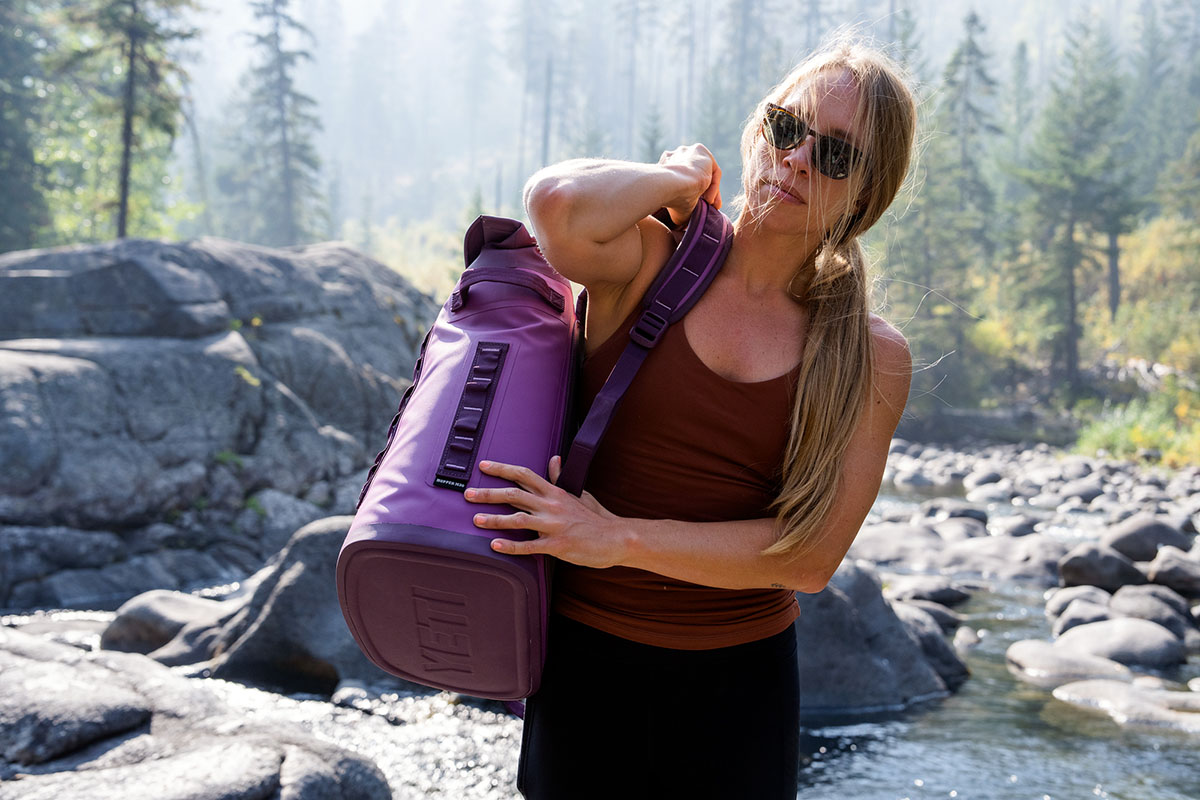
Right away, we’ll note that backpack coolers aren’t designed to be hauled for long distances like a true daypack or backpacking pack. They do, however, keep your hands free and make life far easier for walking over uneven ground than hard-sided or traditional soft-sided coolers. In addition to their low weight, most backpack coolers come with padded shoulder straps and backpanels for keeping you comfortable on the move, as well as exterior pockets and lash points for added gear storage. A few options above (including the Coleman Chiller, Icemule Boss, RTIC Backpack Cooler, and CamelBak ChillBak) also have a hipbelt for transferring the weight onto your hips, which can help with long-distance carrying comfort, but it’s not a necessity for most.
From our experience, price usually correlates with nicer suspensions and padding, with high-end designs like the Yeti Hopper M20 and Icemule Boss leading the charge. And we’ve found budget coolers with more basic strap systems like those from Coleman and Arctic Zone aren’t as comfortable to carry for extended stretches (plus cheap foam is more prone to breaking down over time). An additional consideration is the shape and size of the cooler. And in general, tall and rectangular designs with a fairly rigid structure (like RTIC's Backpack Cooler) are among the least comfortable. All that said, every single model to make our list is perfectly serviceable for hauling food and beverages for short stretches, such as to a beach, boat, or campsite.
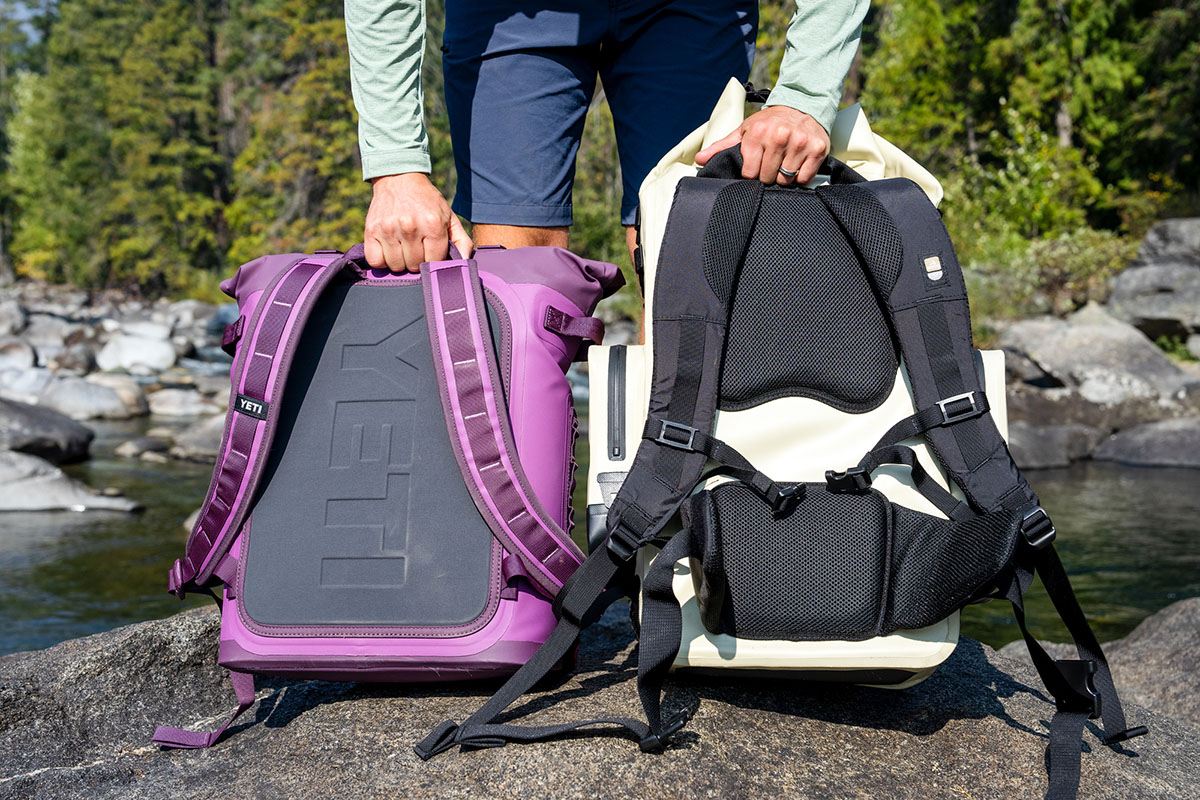
Durability varies considerably between backpack coolers, and a good way to differentiate between models is to look at denier (D), which is a measurement of fabric thickness. Rigid designs like Yeti’s Hopper M20, Engel’s Roll Top High Performance, and Pelican’s Dayventure Backpack Cooler (all 840D) sit at the top of the pack. These designs have tough exteriors that feel very confidence-inspiring around sharp gear and have stood up very well to regular use throughout testing with little wear to show for it. Icemule’s Pro Large cooler is another standout in this area, with a thick (1,000D) and dry bag-like exterior that’s well equipped for rough and rugged outdoor adventures. Softer and more malleable options like Icemule's Jaunt 15L feel significantly less burly and may be more prone to wear and tear over time, but they’re still reasonably well built for most casual outdoor uses.
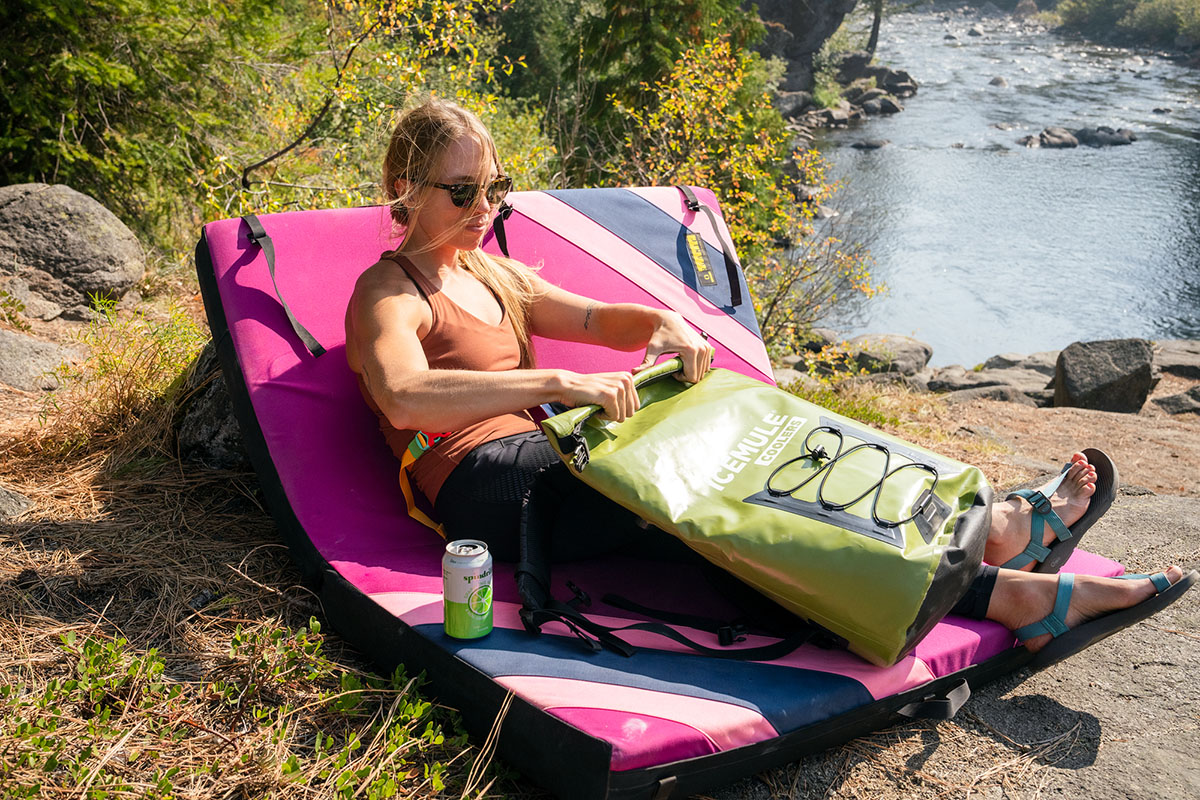
On a related note, it’s worth pointing out that price and build quality often correlate pretty closely: Budget-friendly designs like the Arctic Zone Titan Deep Freeze, Coleman Chiller 28-Can Backpack Cooler, and Carhartt Insulated Two Compartment Cooler Backpack have noticeably cheaper-feeling constructions and components than their more premium counterparts (they'll also be the first to leak as your ice melts). Again, these options may be totally workable for casual day trips and infrequent use, but committed outdoor-goers who plan to use their cooler regularly (and especially around water) will likely benefit from spending up.
Many of the mid-range and high-end coolers above utilize highly water-resistant zippers or openings, which helps with leak prevention. Taking it a step further are fully waterproof coolers like Icemule's Pro, which has a dry-bag like shape and can be submerged in water. RTIC’s Backpack Cooler and Hydro Flask’s 20 L Day Escape are also fully waterproof, including welded seams and watertight zippers, while Icemule's Boss tacks on a handy air valve to keep it afloat should conditions get rougher than expected. Most other options above are highly water-resistant and can hold their own in light moisture, but kayakers and paddleboarders will likely want to step up to a fully waterproof option for added assurance while out on the water.
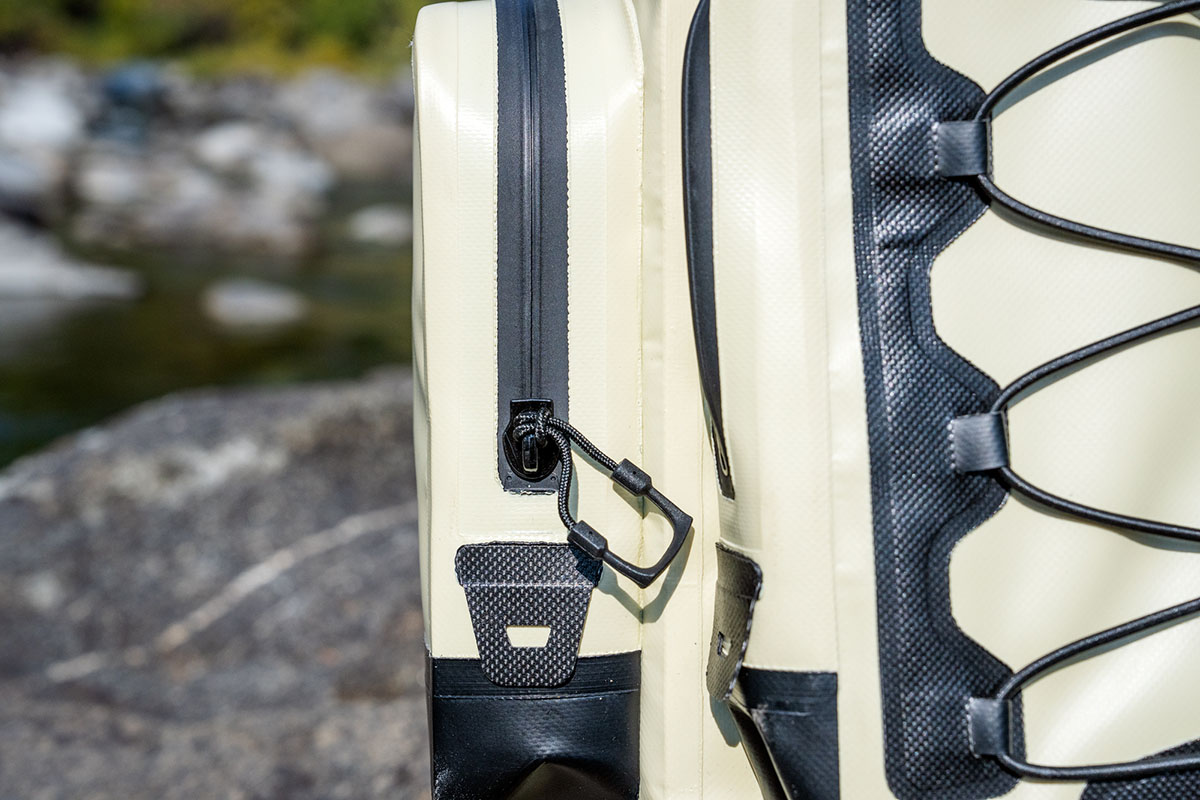
A few of the options above boast separate compartments for housing gear, including the REI Cool Trail Split Pack, Carhartt Insulated Two Compartment Cooler Backpack, and Pelican Dayventure Backpack Cooler. These hybrid designs are simple but well executed: You get an insulated bottom compartment for keeping food and beverages cold, while the upper section can be used for stashing layers, snacks, and accessories. The Pelican is the only design of the bunch that’s fully insulated (you can utilize both areas for food and drinks), while the REI and Carhartt only include insulation in the bottom compartment. The biggest downside is that the gear storage space eats into the cooler capacity, giving these packs limited appeal for group outings and other instances when you need to keep a full day’s worth of food and beverages cold. But they’re great for packing a light lunch and a couple drinks, and the REI’s cooler insert is also removable so that you can use the entire capacity for gear.
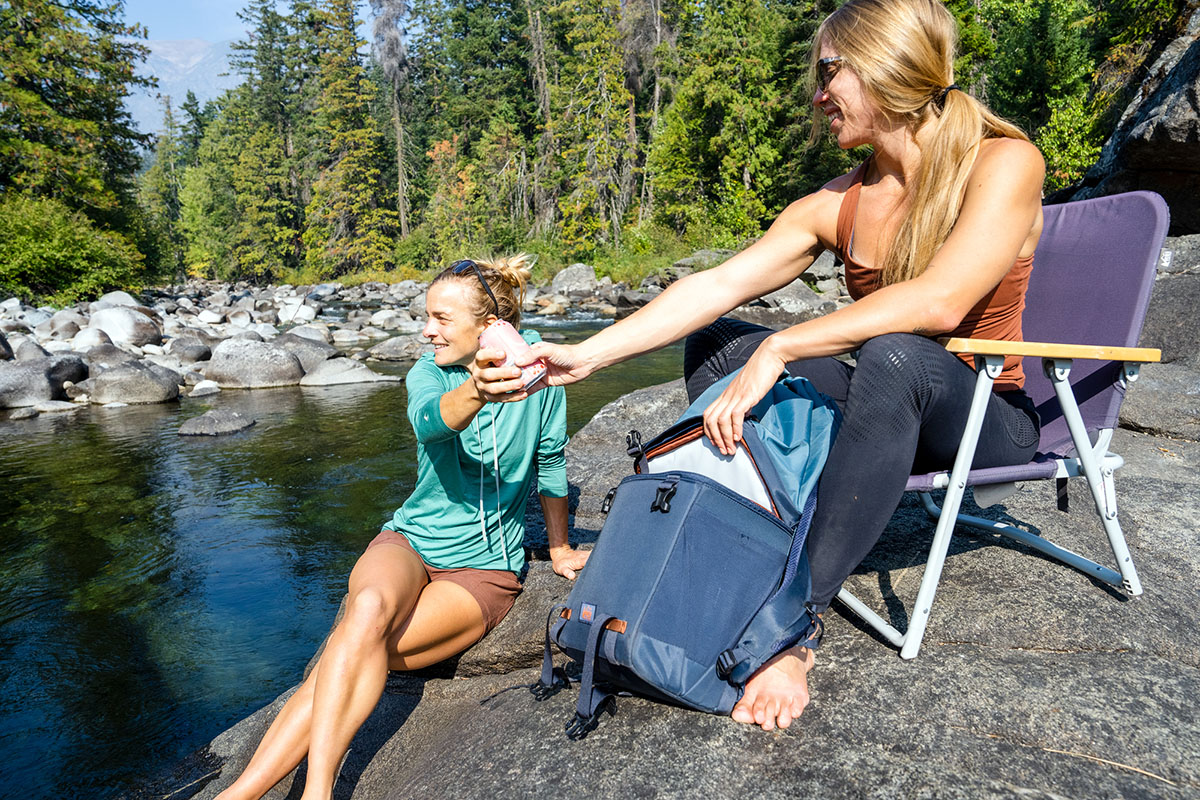
The opening style and closure system of a backpack cooler may not seem all that important, but we can tell you firsthand that it will have a sizable impact on both convenience and overall performance. And styles vary considerably between models. The Yeti Hopper M20, for instance, has a magnet-equipped opening that closes easily but can be difficult to prop open wide enough to fit large items. Many zipper-equipped options, such as RTIC’s Backpack Cooler, also require significant force to operate the zippers, although the wraparound design makes it easier to prop the lid open, and the upside is that these styles are often very resistant to leaks. Another one of our favorites is the watertight zipper on Hydro Flask’s 20 L Day Escape, which requires minimal force to open, provides a reliable seal, and is easy to realign if it separates.
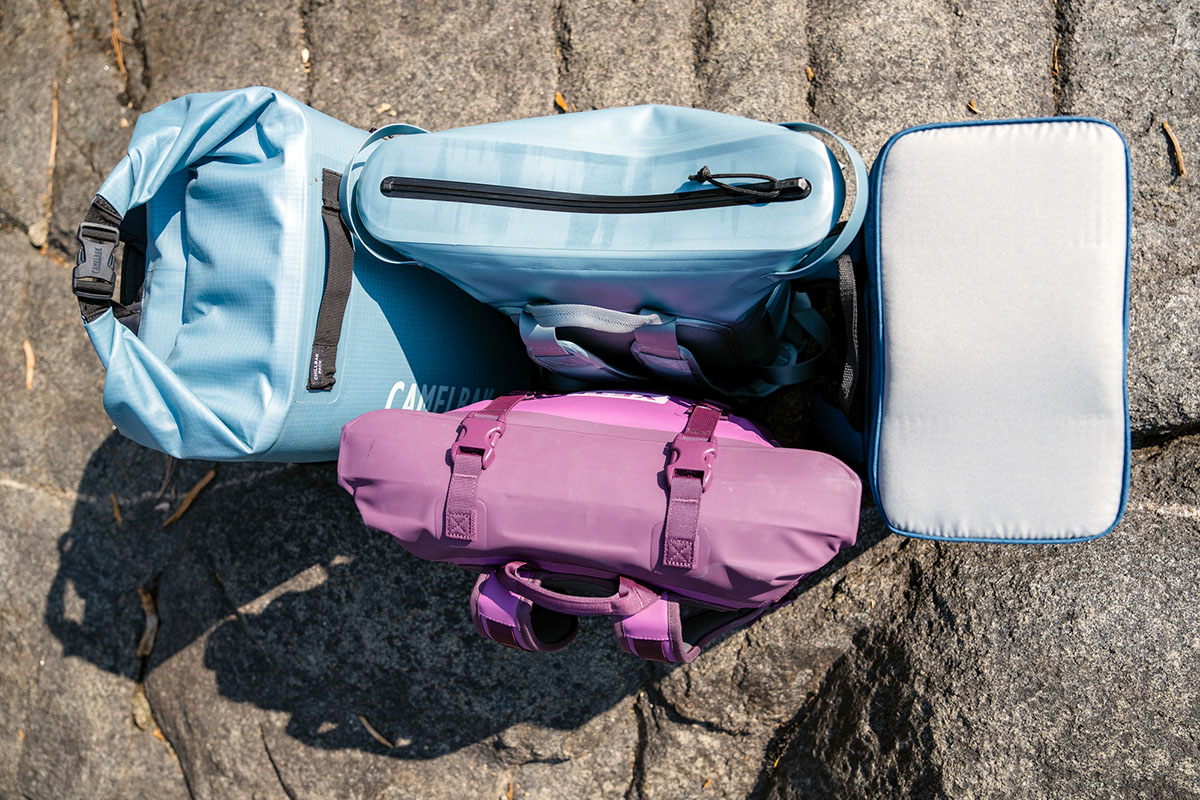
A final style worth calling out is the roll-top opening, which is shared among all of Icemule's options as well as CamelBak’s ChillBak Pack 30, Engel’s Roll Top High Performance, and Pelican’s Dayventure above. We've found that roll tops create a wide opening to load/unload items, and when combined with a flexible structure (like the Icemules), they're easy to compress around a half-filled bag. For downsides, the roll top does take more time to secure than a zipper, and it requires two hands to work on. In the end, each style has its fair share off pros and cons, but a smooth-operating zipper, like the one that comes the Hydro Flask's Escape, is our personal favorite.
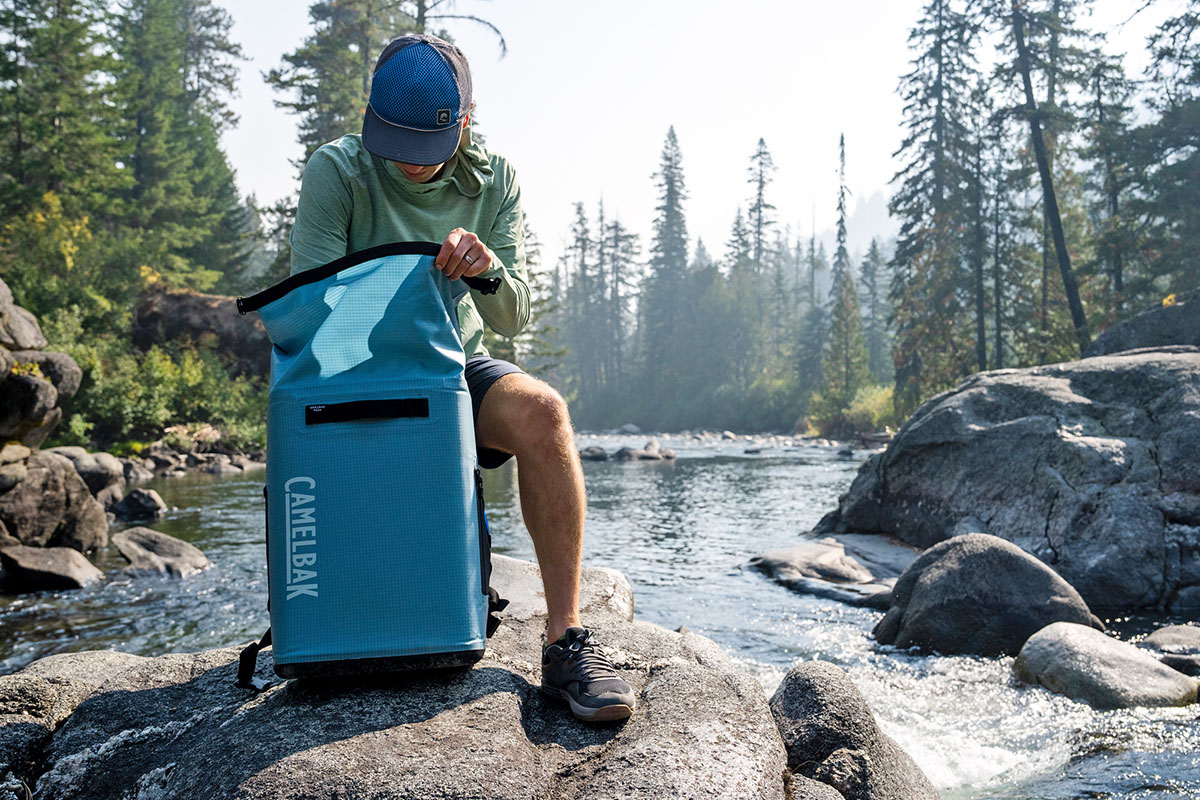
Pockets and Organization
Backpack coolers come in a range of shapes and designs, but many include at least one exterior pocket for stashing small valuables like a phone, wallet, or keys. In use, we’ve found these to be very helpful for keeping track of our belongings whether we’re spending a day at a local state park or enjoying an afternoon at the beach. We also appreciate when these pockets are water-resistant, which provides a little extra assurance against splashes or precipitation. A few models that include functional stash pockets include Igloo’s Pursuit (its front zippered pocket can even fit a tablet), Icemule's Boss, and Carhartt’s Insulated Two Compartment Cooler Backpack.
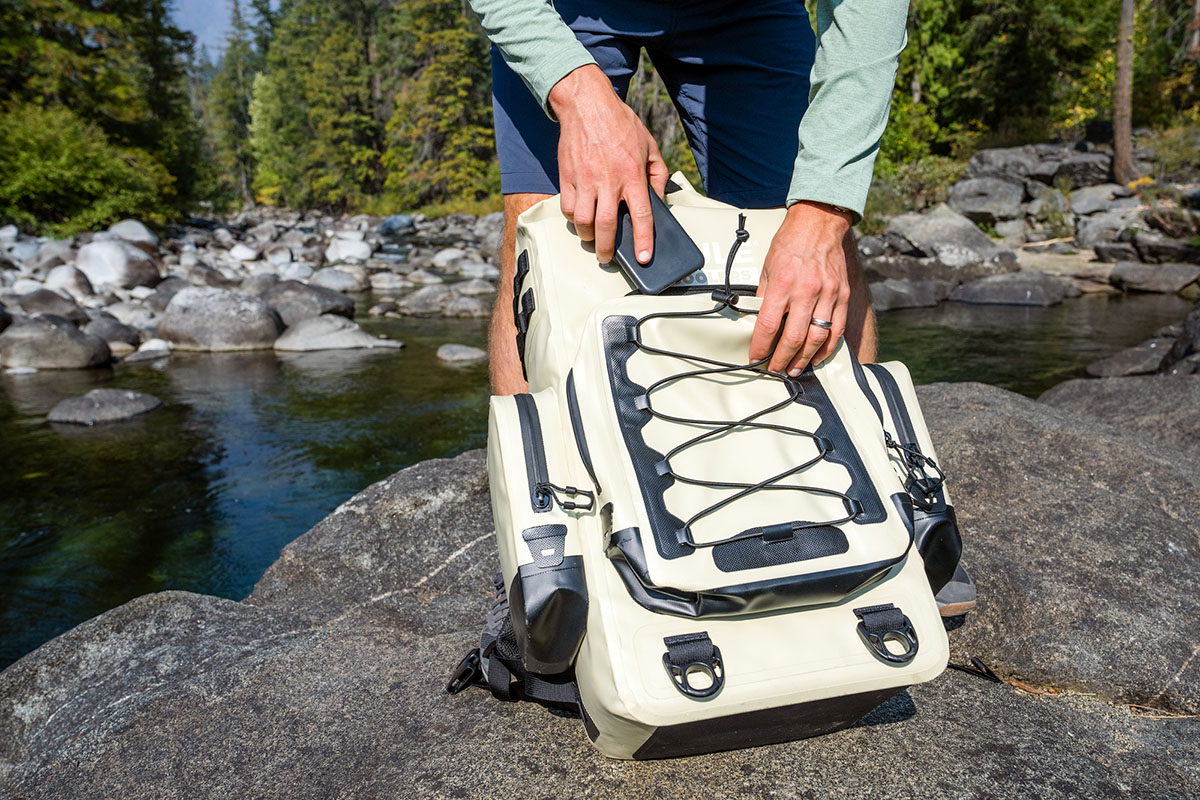
External Attachment Points
Many backpack coolers, including Yeti’s Hopper M20 and Hydro Flask’s 20 L Day Escape, have daisy chain webbing along the outside for securing extra gear. In use, we’ve found this area useful for keeping valuables like keys close at hand (we use a carabiner to attach them). And we particularly like the stretchy bungee system on Icemule's Pro and Boss models, which makes it easy to secure a lightweight jacket or small towel.
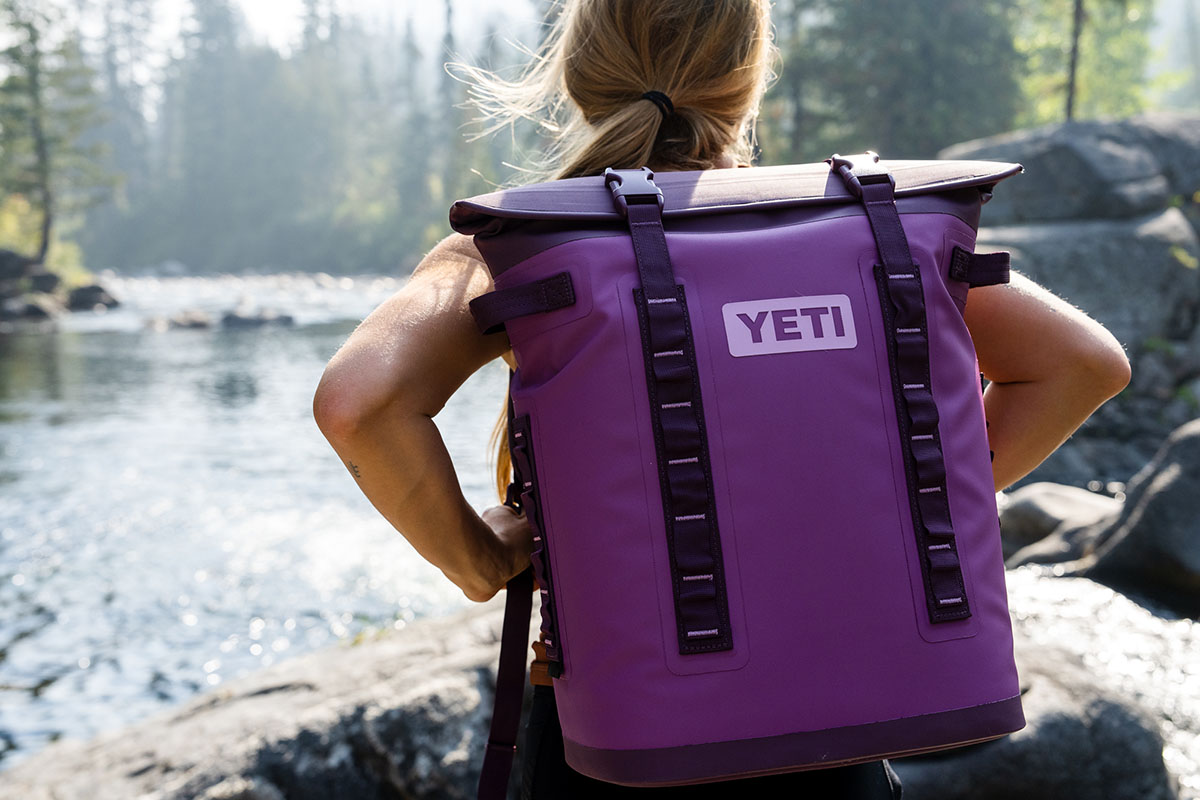
Other Features
A few other notable features to be on the lookout for include integrated bottle openers and vacuum ports for adding or releasing air. From our list above, the Engel Roll Top High Performance, Arctic Zone Titan Deep Freeze, and Igloo Pursuit come with bottle openers, and the Engel also includes a unique vacuum valve that allows you to suck out excess air before use to maximize its insulation power. Icemule's Boss has a similar valve system, although in this case, the process involves adding air to boost cooling capabilities and buoyancy and removing it to compress the cooler down for storage.
Another feature worth calling out is the REI Cool Trail Split Pack’s removable cooler insert, which makes for easy cleaning and allows you to use the full capacity for gear on day hikes. Some coolers also boast attachment points for strapping down to a boat or truck bed, which can add a nice dose of security in rough waters or on rocky drives to the trailhead. Finally, CamelBak's ChillBak is the only cooler line on the market to include a hydration reservoir, which is great for adventures like single-pitch climbing or group adventures when you'll want to keep everyone hydrated.
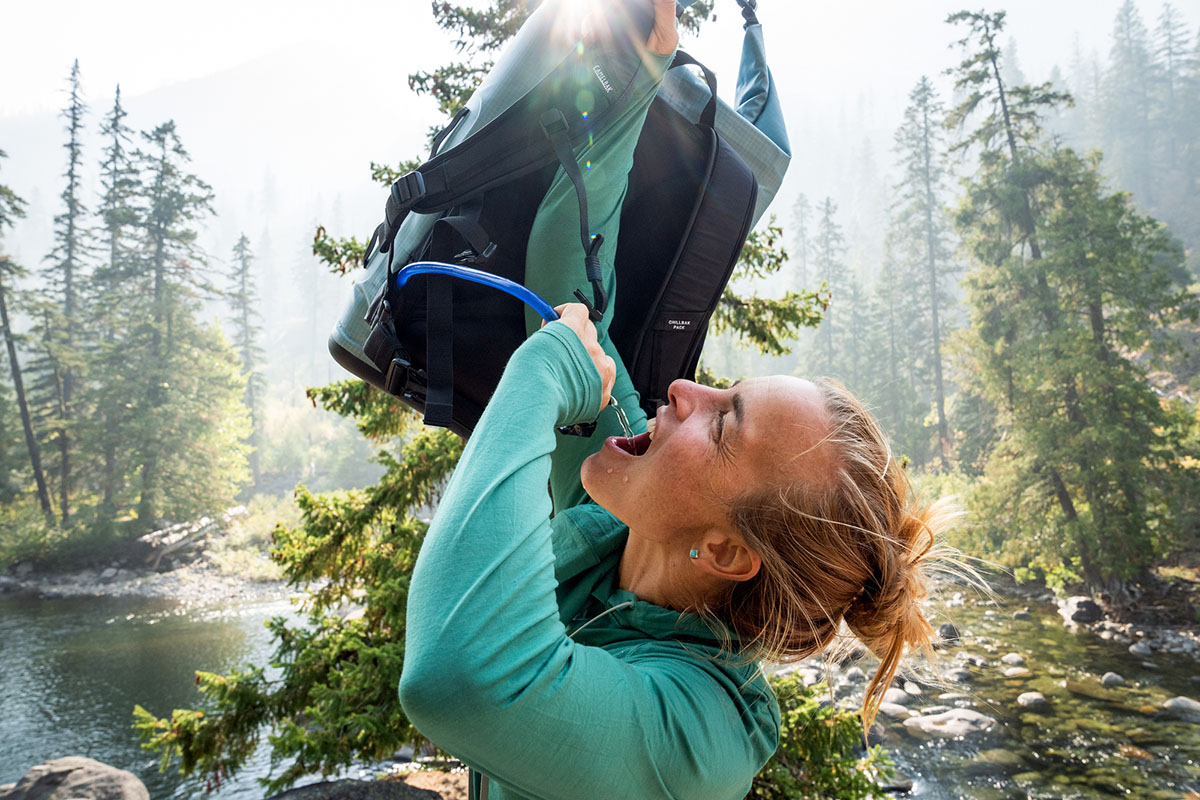
Many soft cooler manufacturers also sell compatible accessories that can attach directly to the outside of their coolers. For instance, Hydro Flask’s 20 L Day Escape has thread-through points on the outside for securing one of their Dry Storage Bags (offered in small, medium, and large sizes). Icemule sells a similar storage pouch, as well as an ultralight dry bag that fits nicely inside their Pro coolers for added assurance against leaks (although we haven’t had any issues to date). And Yeti’s accessories for their soft coolers are relatively limited compared to their hard-sided collection, although we do like their similar SideKick Dry Gear Case that attaches to the HitchPoint grid on their Hopper M20, as well as the Molle Zinger for securing a multitool or bottle opener. Finally, several brands offer small add-ons like leakproof food containers, although you can realistically buy those anywhere.
The price spread among backpack coolers is significant, ranging from just $40 for the Coleman Chiller 28-Can Backpack Cooler all the way up to $375 for Icemule’s top-end Boss above. What do you get by spending up? As we touched on previously, durability, waterproofing/leakproofing, and cost often correlate closely, with top-shelf designs like the Boss, Engel’s Roll Top High Performance, and Pelican’s Dayventure Backpack Cooler all boasting impressively thick and rigid exteriors that will stand up very well to long-term use. That said, even the cheapest options on our list are reasonably well built and will get the job done for days at the beach or lake, which will be enough to sway many.
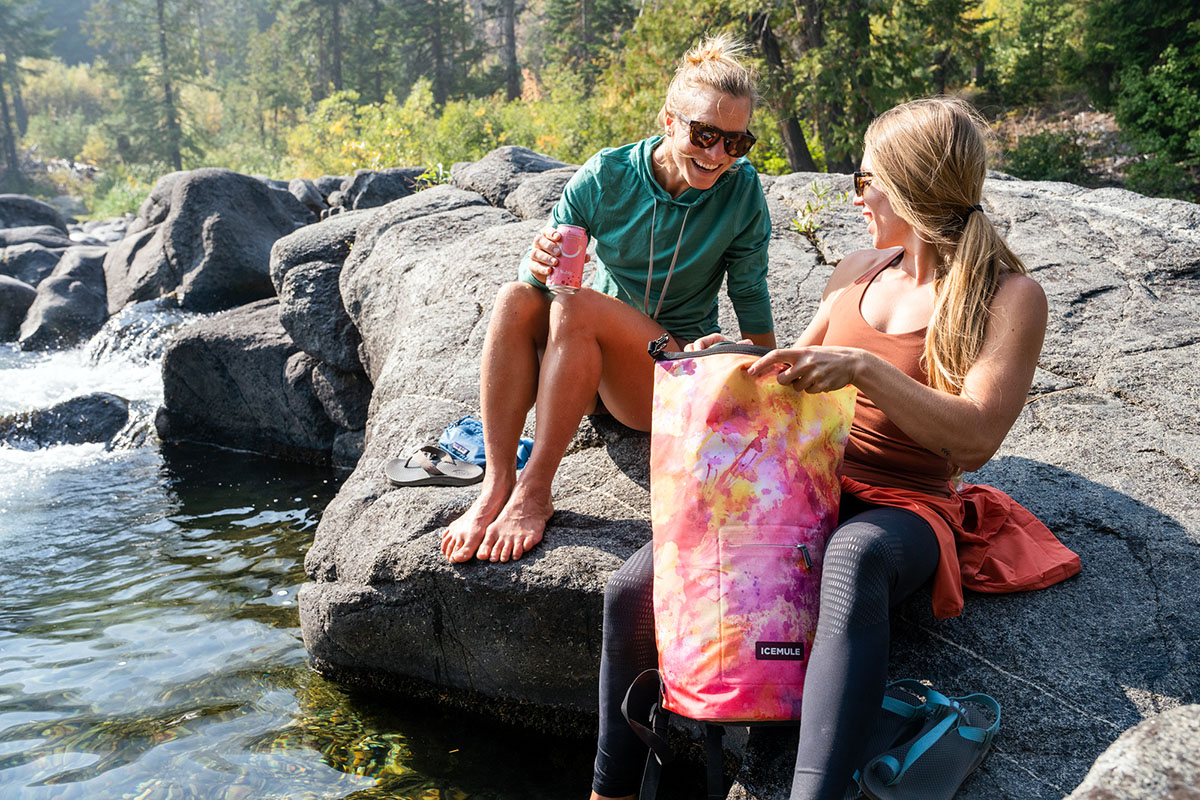
Additionally, unlike hard coolers, the difference in ice retention between backpack models isn’t all that sizable, which can make it harder to justify spending up for such a premium and expensive model. To be sure, these top-end designs have their appeal for those who want the easy portability of a backpack cooler without compromising on build quality, but they’re not worth the investment for most. If you’ve got the budget, it’s almost certainly worth opting for a hard-sided model instead. You’ll incur a sizable weight penalty, but the boost in cooling capabilities and overall performance will be well worth that trade-off for many.
Most of us are accustomed to using crushed ice in our coolers, and for good reason: It’s cheap, readily available at most gas stations and supermarkets, and easily fills the gaps between food and beverages. That said, it’s also the fastest to melt and will need to be replaced fairly frequently, which we experienced firsthand while testing many of the models above on a warm late-season outing in Washington State. After an afternoon in direct sunlight, most of the crushed ice we had dumped inside our various coolers had turned to water, resulting in soupiness and sloshing. And in the case of the $45 Arctic Zone Titan, moisture had started seeping through the non-waterproof interior. To make things worse, most backpack coolers don’t come with drainage ports, which can make it difficult and tedious to remove excess water (you’ll have to turn them upside down to dump excess moisture, which isn’t always a mess-free process).
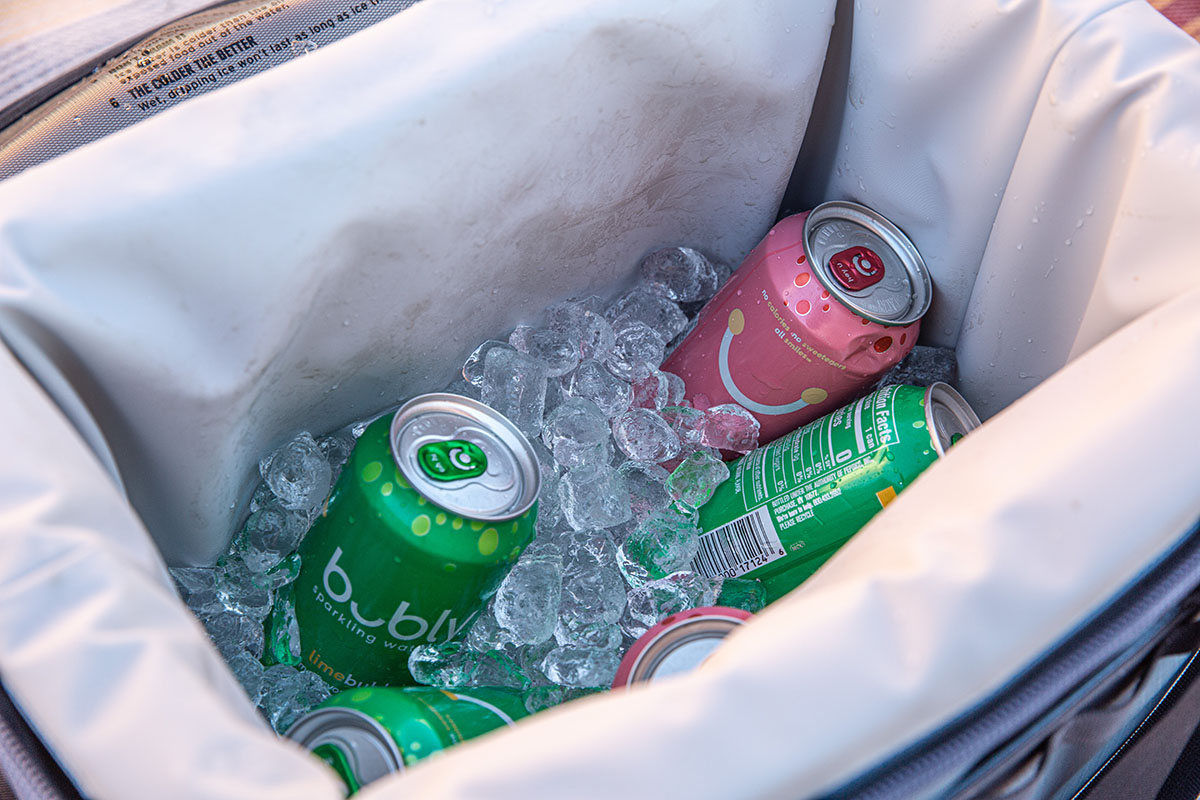
To prevent issues like these, we strongly recommend using dedicated ice packs in your backpack cooler instead (unless you're only using the cooler to carry drinks and/or cans). To simplify the buying process, most major brands have their own designs that work well in their coolers, and the best part is that you can use them repeatedly without ever having to drain melted ice. They can be a fairly expensive addition (Yeti's range from around $15 to $30 depending on size) and require refreezing once they lose their coldness, but they’re the simplest and least messy option for soft coolers. A final alternative is using blocks of ice, which take much longer to melt than crushed ice but are bulky and take up a lot of space. And one last note: Dry ice will damage the interior of most soft-sided models, so be sure to steer clear and use one of the other options mentioned above.
Before investing in a backpack cooler, it's prudent to consider how long it’s covered under warranty. A one-year warranty is pretty standard in the soft cooler market, while three to five years is on the generous end. For reference, Yeti and Pelican both offer three-year warranties on their backpack coolers, while RTIC’s are covered for just 90 days. Importantly, all of these are limited warranties that solely cover defects in materials or workmanship and exclude damage from typical wear and tear. One exception is REI Co-op, which offers a full refund or replacement within one year of purchase for members (90 days for non-members). Finally, it’s worth noting that many companies provide different warranties for their hard-sided versus soft-sided offerings. For example, Yeti’s hard-sided Tundra series is covered with a five-year warranty compared to three for the Hopper collection.
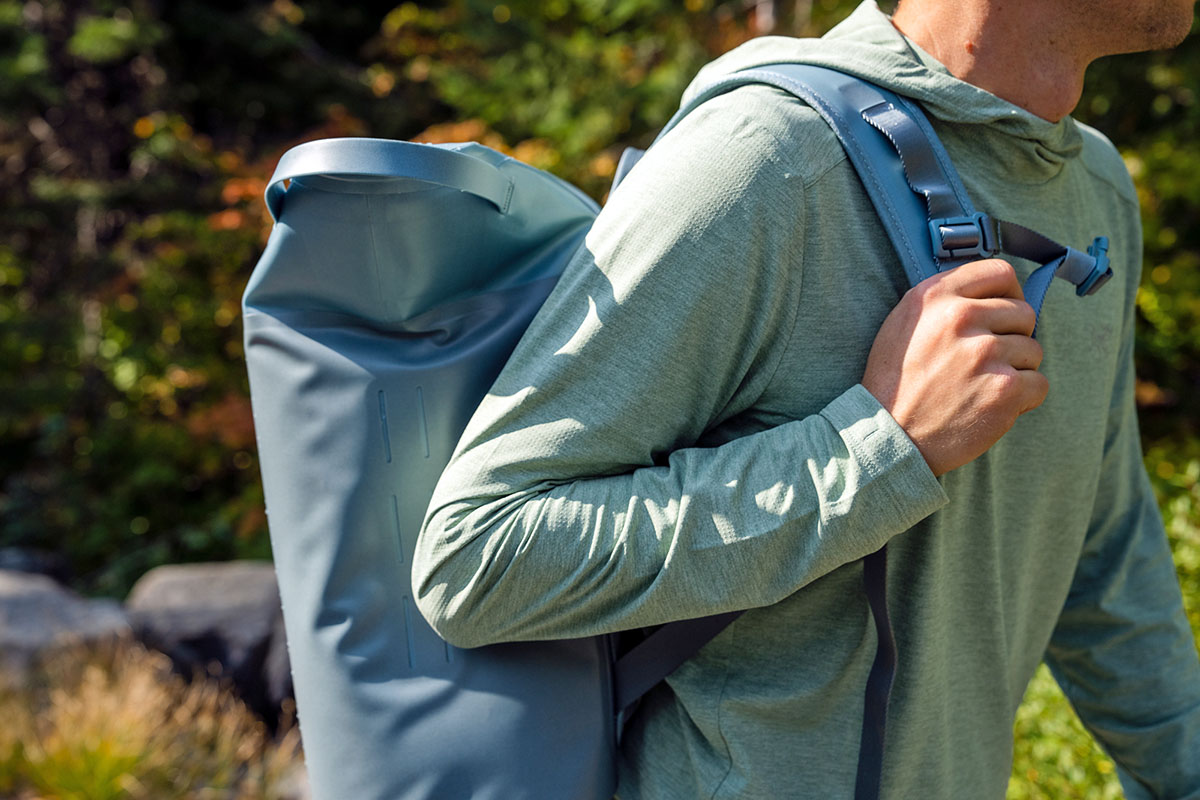
Backpack coolers are a relatively easy bunch to care for, but following a few easy steps can make a big difference in overall longevity. After each trip, it’s good practice to clean out the interior with a mixture of warm water and mild soap. For tough stains, apply a solution of baking soda and water and let it sit for about 20 minutes before washing it off. Pesky odors can be treated with a diluted mixture of bleach and water. Make sure to rinse thoroughly before leaving the cooler out to air dry with the lid open, which will minimize the chance of mold or mildew buildup. Once it’s dry, store your cooler in a dry place with the zipper closed. Finally, if any of the zippers are giving you issues, ensure there's no debris between the teeth and apply a lubricant (like Gear Aid’s Zipper Cleaner and Lubricant) on both sides to keep them running smoothly.
We exclusively cover backpack-style coolers above, which offer the ultimate in portability. For a step down in price, traditional soft-sided models are also relatively easy to carry (much more so than heavy hard-sided designs) but lack the shoulder straps and suspension system of backpack-style designs for shuttling longer distances. For multi-day trips, however, hard-sided models are far and away the best option. Namely, they retain ice for much longer (two to 10 days is standard), are inherently far more durable and hardwearing, and come in larger capacities. Many hard coolers also boast helpful features like drainage systems to help you empty out water once your ice has melted and lockable lids to bear-proof your cooler when camping in bear country.
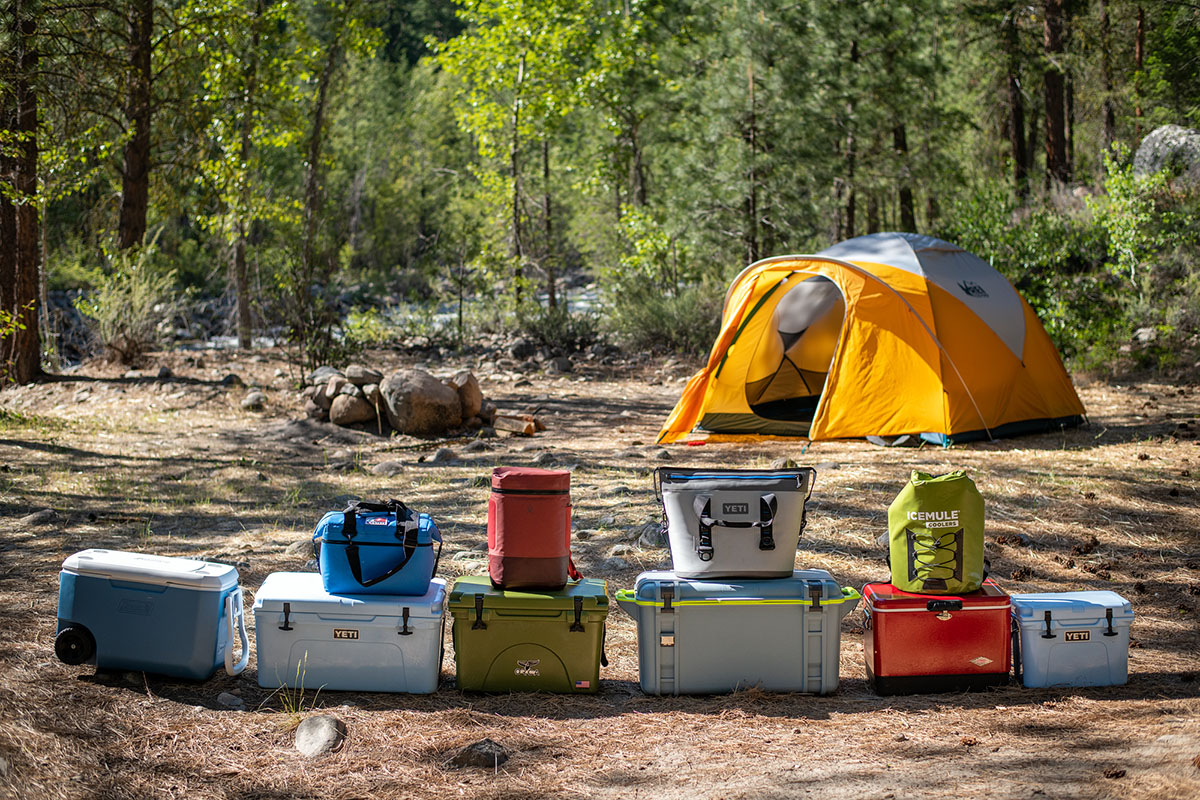
In terms of drawbacks, hard-sided coolers are significantly heavier, bulkier, pricier, and less portable than both soft coolers and backpack-style models, but most committed campers will find those trade-offs worth it for the boost in overall performance. Some of our favorite designs include RTIC’s Ultra-Light lineup, Yeti's Tundra series, and Pelican’s Elite collection. For a full list of options (including buying considerations specific to hard-sided offerings), check out our article on the best coolers.
Back to Our Top Backpack Cooler Picks Back to Our Backpack Cooler Comparison Table